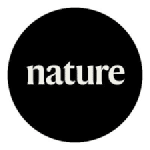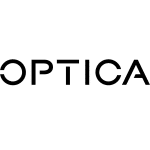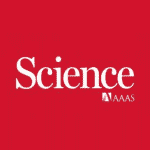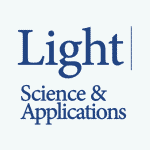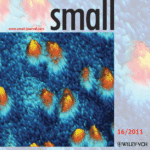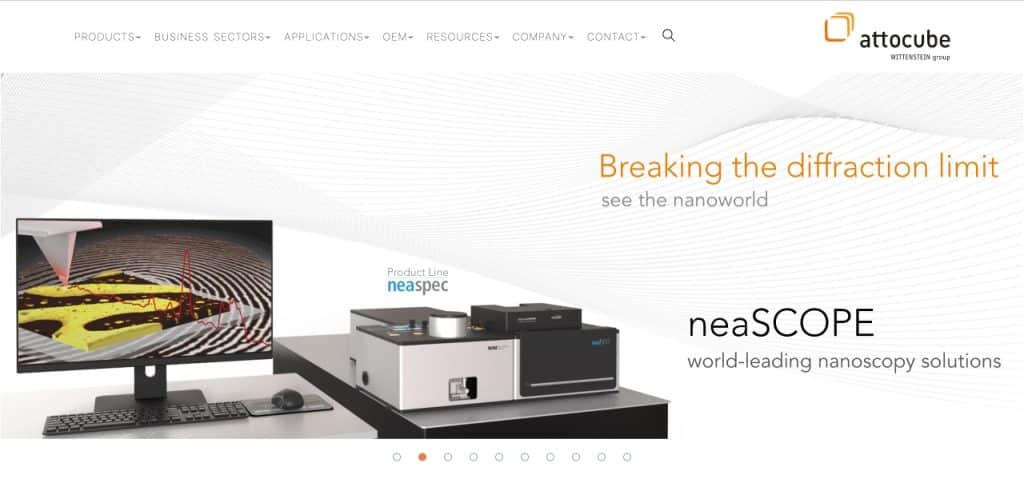Nanoscale imaging & spectroscopy application notes
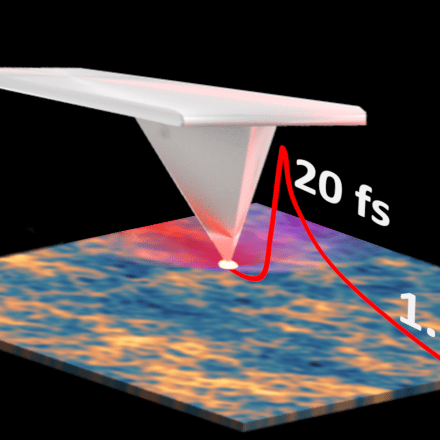 01
01Ultrafast pump-probe nanoscopy enables study of dynamic processes in nano-materials by providing time-resolved spectroscopy with nanoscale spatial resolution. This e-book...
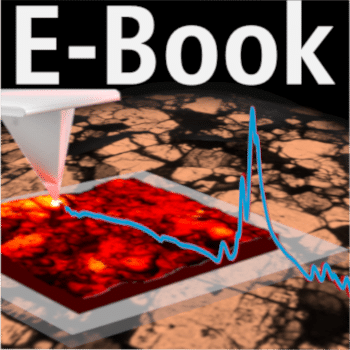 01
01This E-Book summarizes applications of nanoscale investigation of inorganic materials in energy-storage, mineralogy, archaeology and corrosion sciences.
 01
01Researchers at the University of Stuttgart equipped with a neaSCOPE have now succeeded to observe switching processes at unattained nanometer resolution.
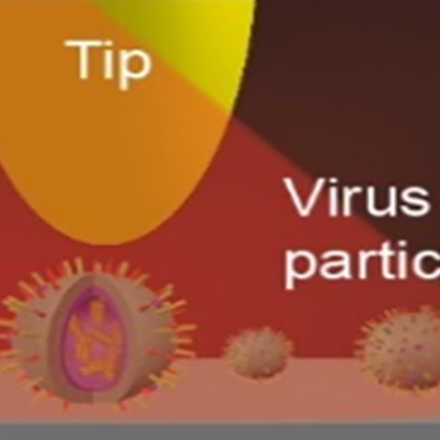 01
01Researchers from Georgia employed nano-FTIR spectroscopy and IR nanoscale imaging for investigating how individual enveloped viruses (CoV, IFV, HIV, Ebola, etc.) enter into a host cell, revealing new membrane penetration mechanisms and inhibition processes for antiviral therapies.
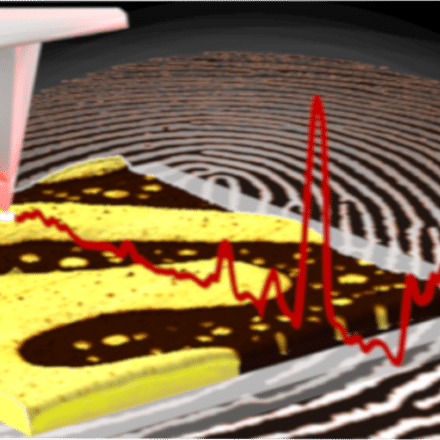 01
01Download E-Book About this E-Book: Nanocomposite polymers, multilayer thin films, nanofibers and other polymer nanoforms often offer new properties or enhanced...
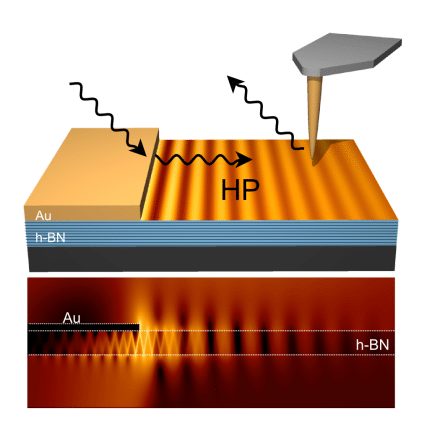 01
01neaspec’s neaSCOPE was used by researchers at the CIC nanoGUNE to visualize how light moves in time and space inside an exotic class of matter known as hyperbolic materials. For the first time, ultraslow pulse propagation and backward propagating waves in deep subwavelength-scale thick slabs of boron nitride – a natural hyperbolic material for infrared light – could be observed.
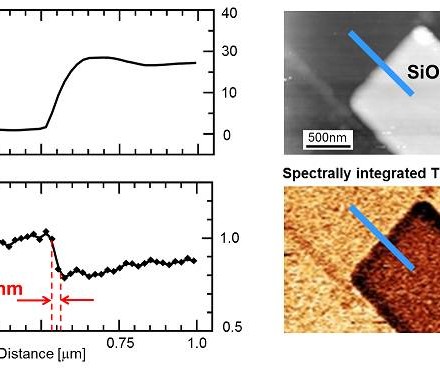 01
01neaspec developed a ready-to-use terahertz system that is capable of achieving a spatial resolution of 30 nanometers.
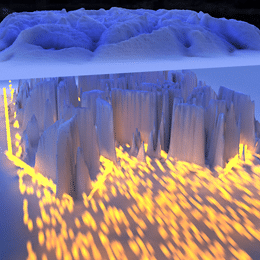 01
01Using nano-FTIR neaSCOPE it could be shown that thin-film organic semiconductors contain regions of structural disorder. These could inhibit the transport of charge and limit the efficiency of organic electronic devices.
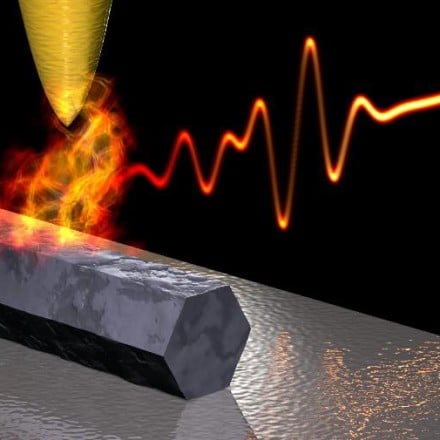 01
01The neaSCOPE microscope equipped with a THz illumination unit were applied in ultrafast spectroscopy to take snapshots of super-fast electronic nano-motion. The scientists were able to record a 3D movie of electrons moving at the surface of a semiconductor nanowire.
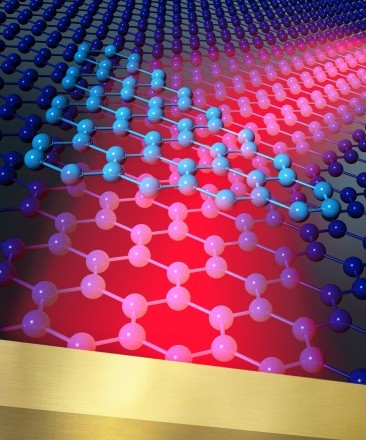 01
01neaspec's neaSCOPE microscope allows for launching and controlling light propagating along graphene, opening new venues for extremely miniaturized photonic devices and circuits
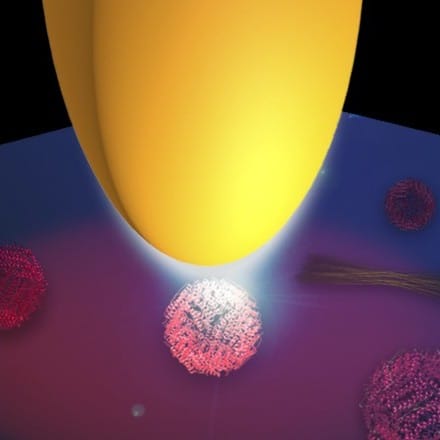 01
01nano-FTIR beats the diffraction limit in infrared bio-spectroscopy and probes secondary structure in individual protein complexes
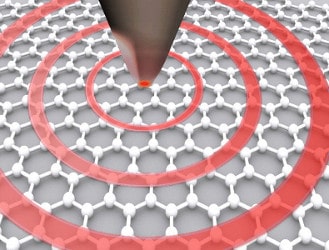 01
01Two independent research teams have successfully used their neaSCOPE infrared near-field microscopes for laying down a ghost: visualizing Dirac plasmons propagating along graphene, for the first time.
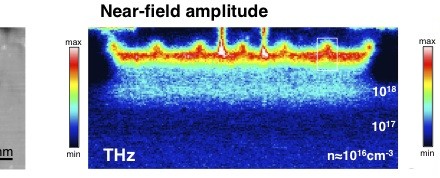 01
01Near-field microscopy at infared and terahertz frequencies allows to quantify free carrier properties at the nanoscale without the need of electrical contacts.
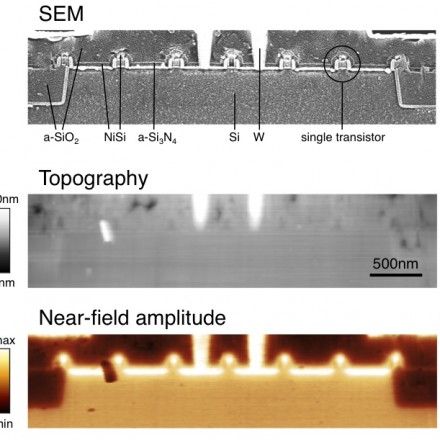 01
01Based on their unique near-field spectral signature infrared-active materials can be identified with neaSCOPE.
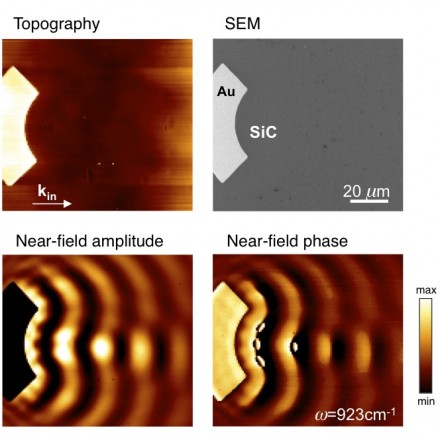 01
01Infrared near-field microscopy allows to study the propagation of surface waves in the infrared spectral regime. Amplitude and phase resolved...
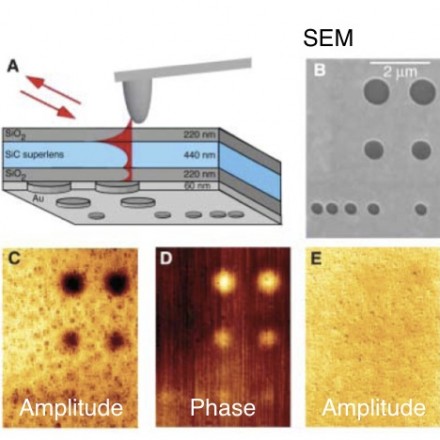 01
01Direct verification of superlensing can be achieved by near-field microscopy as the local field transmitted by a superlens can be investigated in the near-field of the lens.
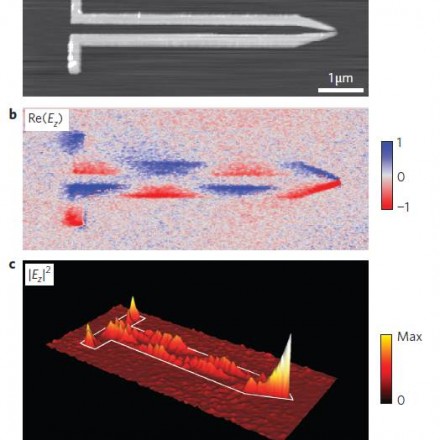 01
01Direct visualization of infrared light transportation and nanofocusing by miniature transmission lines is possible by amplitude- and phase-resolved near-field microscopy.
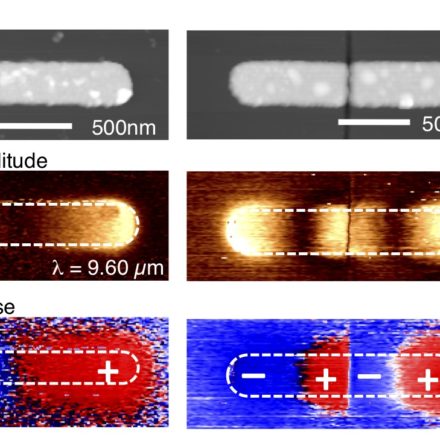 01
01Amplitude and phase resolved near-field mapping of the local field distribution on resonant IR antennas can be used to analyze the antenna design and its functionality.
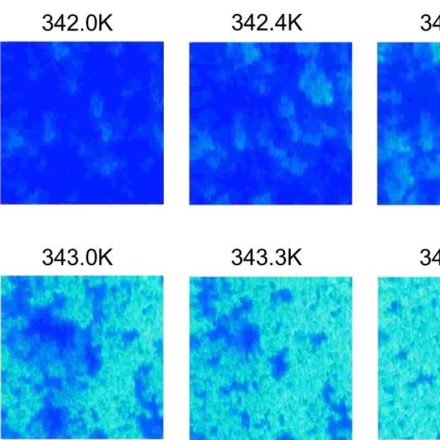 01
01The high spatial resolution of infrared near-field microscopy allows for detailed studies of phase transitions in materials like the insulator-to-metal transition of vanadium dioxide (VO2) thin films.
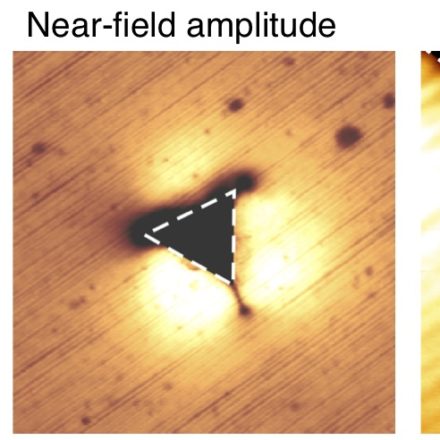 01
01Mapping nanoscale stress/strain fields around nanoindents in the surface of Silicon Carbide (SiC) crystals. Compressive/tensile strain occurs in bright/dark contrast respectively.
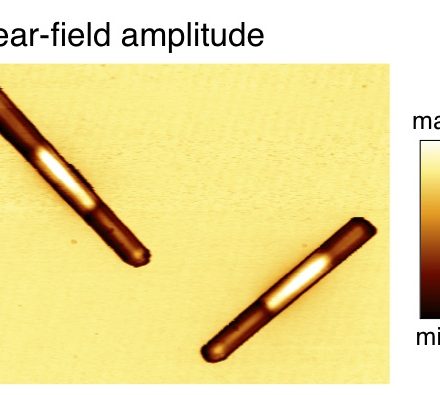 01
01The local conductivity of nanowires can be investigated by infrared near-field microscopy.
Customers that trust us
Our neaSCOPE powered with a THz TDS solution enable us to open new routes to imaging single biomolecules with THz techniques.
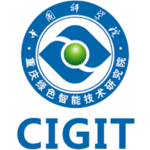
neaSCOPE is one of the key tools of our interdisciplinary research centre dedicated to nanoscience and nanotechnology at the frontier of basic and applied research.
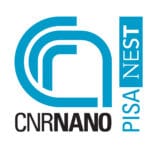
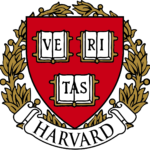
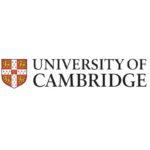
The neaSCOPE microscope with it’s imaging and nano-FTIR mode is the most useful research instrument in years, bringing genuinely new insights.
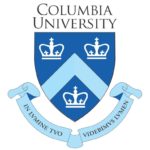
The neaSCOPE near-field microscope and it’s user-friendly software offer us an incredible flexibility for the realization of our unique experiments – without compromises in robustness, handling and ease-of-use.
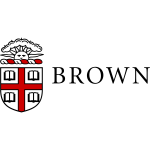
The great stability and robustness of the neaSCOPE are key features for serving our diverse user’s demands. The neaSCAN software is user-friendly and intuitive allowing fresh users to quickly start measuring.
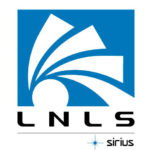
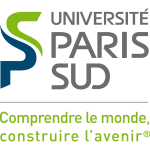
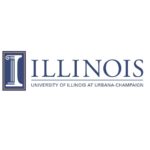
As a newcomer to the near-field optics I am very grateful for the prompt and competent support provided by neaspec’s experts.
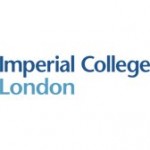
We were looking for a flexible research tool capable of characterizing our energy storage materials at the nanoscale. neaSCOPE proofed to be the system with the highest spatial resolution in infrared imaging and spectroscopy and brings us substantial new insights for our research.
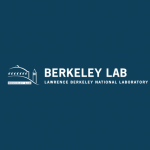
After very successful scientific research with the neaSCOPE microscope, we now decided to bring our research to the next level with the brand-new ultra-low temperature cryo-neaSCOPE.
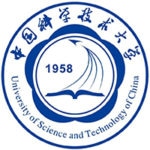
Our neaSCOPE microscope enabled us to maximize our scientific output. It also strengthens the collaboration with several partners worldwide.
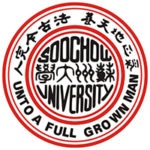
Surfaces & interfaces play an important role in physical chemistry. The neaSCOPE microscope is the ideal tool to study two-dimensional materials, energy conversion & storage. It allows us full access to surface chemical information & modification at the highest spatial resolution.
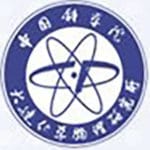
The neaSNOM is the most powerful tool for plasmonic studies. It provides both, the spatial resolution and the complex field mapping, which is essential to the success of our projects.
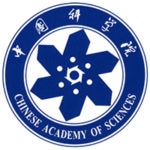
We propose to establish a complete set of nano-FTIR and scattering-type s-SNOM in order to stay competitive in nanophotonics research as well as to maintain our state-of-the-art design and fabrication of novel nanomaterials. Only because of the unique technology from neaspec we were able to win this desirable university grant.

The neaSCOPE microscope boosted my research in plasmonic properties of noble metal nanocrystals, optical resonances of dielectric nanostructures, and plasmon polaritons of graphene-like two dimensional nanomaterials.
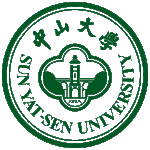
The unique dual beam-path design of the neaSCOPE near-field microscope makes neaspec the natural choice for ultrafast spectroscopy at the nanoscale.
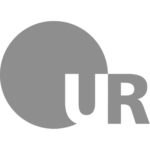
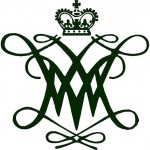
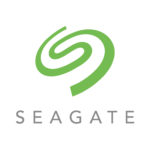
Our neaSCOPE microscope contributes to the development of sensing and imaging systems exploiting the THz spectrum for applications from security and defence to in vivo biomedical imaging.
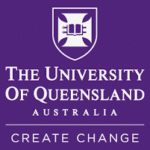
With the neaSCOPE nanoscope, it was possible to “see” the light ripples moving on the graphene, about 300 times slower than light, and dramatically different from what is expected from classical physics laws.
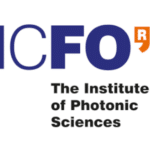
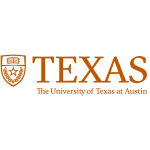
The neaSCOPE new imaging technique offers me the right tool to unravel the fascinating world of protein folding in complex biological systems at the nanoscale
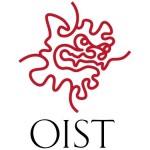
A unique advantage of the neaSCOPE microscope is that it can be applied to many fields of scientific research such as Chemistry, Semiconductor Technology, Polymer Science and even Life-Science.
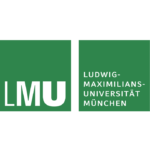
I needed a flexible experimental platform with a high degree of optical access. The highly modular design of neaSCOPE provides an ideal foundation for the development of my own experiments on top of it.
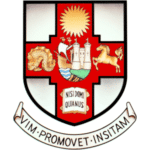
Our neaSCOPE microscope supported us to be the first to develop the research field of optical skyrmions and set the stage for a new platform for information processing, transfer and storage applications.
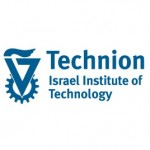
With its ultra-small & ultra-fast capabilities as well as the highly-compatible & user-friendly design, the neaSCOPE near-field microscope offers us unique opportunities to uncover the intriguing nano-optical phenomena of novel two-dimensional materials.
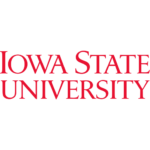
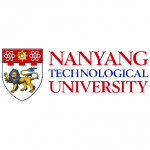
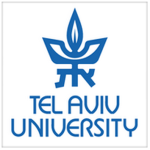
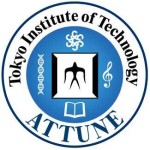
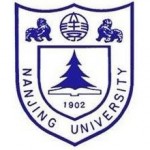
As a near-field expert, I was quickly convinced that neaSCOPE is the only optical AFM microscope completely satisfying the needs of demanding near-field experiments. It’s the best commercially available technology and in addition really easy to use.
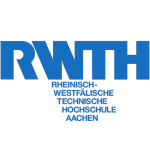
Developed by the s-SNOM experts, the neaSCOPE microsocope is the ideal tool for our demanding applications. We work on characterizing opto-electronic devices like LEDs, transistors based on GaN and SiC as well as nanocomposites in e.g. textile fibers.
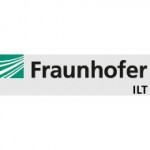
After many years of research and development in near-field microscopy, we finally made our dream come true to perform infrared imaging & spectroscopy at the nanoscale. With neaSCOPE we can additionally realize Raman, fluorescence and non-linear nano-spectroscopy.
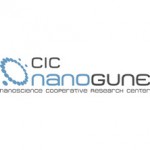
neaspec provides an ideal and reliable near-field optical microscope. Their expertise has proved invaluable in setting up my experiments.
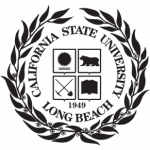
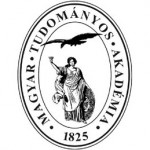
Already after the first day of the system installation we have been able to measure publishable data.
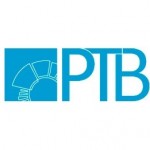
Creating remarkable scientific impact
Colloids and Surfaces B: Biointerfaces 235, 113769 (2024)
Nano-FTIR spectroscopy of surface confluent polydopamine films – What is the role of deposition time and substrate material?Nature Communications 15, 1552 (2024)
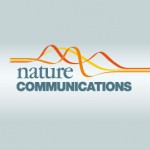 Wandering principal optical axes in van der Waals triclinic materials
Wandering principal optical axes in van der Waals triclinic materialsNanoscale (2024)
Infrared nanoimaging of neuronal ultrastructure and nanoparticle interaction with cellsNature Communications 15, 1812 (2024)
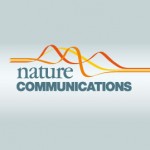 Myriad Mapping of nanoscale minerals reveals calcium carbonate hemihydrate in forming nacre and coral biominerals
Myriad Mapping of nanoscale minerals reveals calcium carbonate hemihydrate in forming nacre and coral biomineralsAdvanced Optical Materials 2302797 (2024)
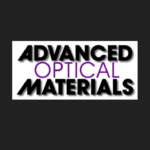 High-Index and Low-Loss Topological Insulators for Mid-Infrared Nanophotonics: Bismuth and Antimony Chalcogenides
High-Index and Low-Loss Topological Insulators for Mid-Infrared Nanophotonics: Bismuth and Antimony ChalcogenidesScience Advances 10, 8 (2024)
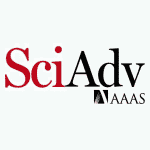 Tunable plasmonic superchiral light for ultrasensitive detection of chiral molecules
Tunable plasmonic superchiral light for ultrasensitive detection of chiral moleculesChemistry of Materials (2024)
Photoluminescence Modulation of Graphene/MoS2 Heterostructures Separated by Laser-Induced FunctionalizationNanophotonics (2024)
Tunable hyperbolic polaritons with plasmonic phase-change material In3SbTe2The Journal of Physical Chemistry C 128, 2052 (2024)
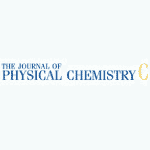 Nanoimaging of Water Bending and Carboxylate Stretching Modes in Colloidal Nanocrystal Films
Nanoimaging of Water Bending and Carboxylate Stretching Modes in Colloidal Nanocrystal FilmsSustainable Energy Fuels 8, 997 (2024)
Impact of hole-transport layer materials on the field-induced degradation of p-i-n perovskite solar cells†Nature Communications 15, 709 (2024)
 Manipulating hyperbolic transient plasmons in a layered semiconductor
Manipulating hyperbolic transient plasmons in a layered semiconductorACS Nano 18, 4118 (2024)
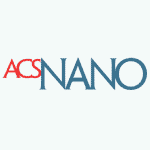 Enabling Waveguide Optics in Rhombohedral-Stacked Transition Metal Dichalcogenides with Laser-Patterned Grating Couplers
Enabling Waveguide Optics in Rhombohedral-Stacked Transition Metal Dichalcogenides with Laser-Patterned Grating CouplersCrystal Growth Design 24, 1068 (2024)
Correlating the Anisotropic Etching Behavior in Layered Chalcogenide Sb2Te3 with Crystal Defect DistributionAdvanced Optical Materials 2302804 (2024)
 Dispersion Engineering of In-Plane Anisotropic Phonon Polaritons in hBN/Te van der Waals Heterostructures
Dispersion Engineering of In-Plane Anisotropic Phonon Polaritons in hBN/Te van der Waals HeterostructuresResults in Physics 56,107318 (2024)
Generic arrays of surface-positioned and shallow-buried gold multi-shapes as reference samples to benchmark near-field microscopes. Part 1: Applications in s-SNOM depth imagingACS Nano 18, 2105 (2024)
 Infrared Nanoimaging of Hydrogenated Perovskite Nickelate Memristive Devices
Infrared Nanoimaging of Hydrogenated Perovskite Nickelate Memristive DevicesNano Letters 24, 836 (2024)
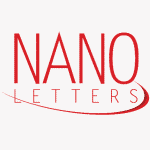 Sub-Tip-Radius Near-Field Interactions in Nano-FTIR Vibrational Spectroscopy on Single Proteins
Sub-Tip-Radius Near-Field Interactions in Nano-FTIR Vibrational Spectroscopy on Single ProteinsNature Materials (2024)
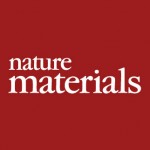 Compensating losses in polariton propagation with synthesized complex frequency excitation
Compensating losses in polariton propagation with synthesized complex frequency excitationAdvanced Functional Materials 2312980 (2024)
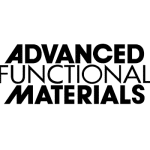 In Operando Near-Field Optical Investigation of Memristive Ta2O5 Thin Film Devices with a Graphene Top Electrode
In Operando Near-Field Optical Investigation of Memristive Ta2O5 Thin Film Devices with a Graphene Top ElectrodeNano Letters 24, 114 (2024)
 Nanoscale Infrared Spectroscopic Characterization of Extended Defects in 4H-Silicon Carbide
Nanoscale Infrared Spectroscopic Characterization of Extended Defects in 4H-Silicon CarbideApplied Physics Reviews 10, 041414 (2023)
Terahertz spin currents resolved with nanometer spatial resolutionACS Photonics 10, 4329 (2023)
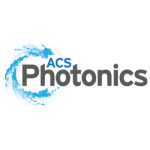 Ultrabroadband Terahertz Near-Field Nanospectroscopy with a HgCdTe Detector
Ultrabroadband Terahertz Near-Field Nanospectroscopy with a HgCdTe DetectorSmall Science 2300162 (2023)
Nanodomain Control in Carbon Molecular Sieve Membranes via Nanomaterial FootprintingNature Communications 14, 7965 (2023)
 Polariton design and modulation via van der Waals/doped semiconductor heterostructures
Polariton design and modulation via van der Waals/doped semiconductor heterostructuresNano Letters 23, 10758 (2023)
 Mid-Infrared Mapping of Four-Layer Graphene Polytypes Using Near-Field Microscopy
Mid-Infrared Mapping of Four-Layer Graphene Polytypes Using Near-Field MicroscopyNature Communications 14, 7686 (2023)
 Thermal and electrostatic tuning of surface phonon-polaritons in LaAlO3/SrTiO3 heterostructures
Thermal and electrostatic tuning of surface phonon-polaritons in LaAlO3/SrTiO3 heterostructuresNano Letters 23, 10243 (2023)
 Topological Transitions and Surface Umklapp Scattering in Weakly Modulated Periodic Metasurfaces
Topological Transitions and Surface Umklapp Scattering in Weakly Modulated Periodic MetasurfacesAdvanced Functional Materials 2308062 (2023)
 Tailored Broad-Spectrum Emission in Hybrid Aggregation Induced Emission (AIE)-MOFs: Boosting White Light Efficiency in Electrospun Janus Microfibers
Tailored Broad-Spectrum Emission in Hybrid Aggregation Induced Emission (AIE)-MOFs: Boosting White Light Efficiency in Electrospun Janus MicrofibersNano Letters 23, 11501 (2023)
 Unveiling Local Optical Properties Using Nanoimaging Phase Mapping in High-Index Topological Insulator Bi2Se3 Resonant Nanostructures
Unveiling Local Optical Properties Using Nanoimaging Phase Mapping in High-Index Topological Insulator Bi2Se3 Resonant NanostructuresNanophotonics 12, 22 (2023)
A low-loss molybdenum plasmonic waveguide: perfect single-crystal preparation and subwavelength grating optimizationCommunications Materials 4, 86 (2023)
Stress–strain relationships and yielding of metal-organic framework monolithsACS Applied Materials Interfaces 15, 47649 (2023)
Elucidating the Mechanism of Large Phosphate Molecule Intercalation Through Graphene-Substrate HeterointerfacesACS Nano 17, 18914 (2023)
 Direct Electrochemical Functionalization of Graphene Grown on Cu Including the Reaction Rate Dependence on the Cu Facet Type
Direct Electrochemical Functionalization of Graphene Grown on Cu Including the Reaction Rate Dependence on the Cu Facet TypeNanoscale 15, 16002 (2023)
Extraordinary optical transmittance generation on Si3N4 membranesActa Biomaterialia 168, 309 (2023)
Probing the micro- and nanoscopic properties of dental materials using infrared spectroscopy: A proof-of-principle studyScience Bulletin 68,1757 (2023)
Tunable heterostructural prism for planar polaritonic switchNature Communications 14, 5240 (2023)
 Controlling the propagation asymmetry of hyperbolic shear polaritons in beta-gallium oxide
Controlling the propagation asymmetry of hyperbolic shear polaritons in beta-gallium oxideScience Advances 9, 34 (2023)
 Ultrafast anisotropic dynamics of hyperbolic nanolight pulse propagation
Ultrafast anisotropic dynamics of hyperbolic nanolight pulse propagationNano Letters 23, 8057 (2023)
 van der Waals Materials for Overcoming Fundamental Limitations in Photonic Integrated Circuitry
van der Waals Materials for Overcoming Fundamental Limitations in Photonic Integrated CircuitrySurface and Coatings Technology 466, 129637 (2023)
Effect of cryogenic laser surface modification on the microstructure evolution and corrosion resistance of accident-tolerant FeCrAl alloysNanoscale 15, 14606 (2023)
Nanoscale insights into the local structural rearrangements of amyloid-β induced by bexaroteneOptics Express 31, 28010 (2023)
Optical nanoimaging of highly-confined phonon polaritons in atomically-thin nanoribbons of α-MoO3Nature Communications 14, 4782 (2023)
 Van der Waals isotope heterostructures for engineering phonon polariton dispersions
Van der Waals isotope heterostructures for engineering phonon polariton dispersionsCommunications Chemistry 6, 163 (2023)
13C- and 15N-labeling of amyloid-β and inhibitory peptides to study their interaction via nanoscale infrared spectroscopyNano Research 16, 11326 (2023)
Graphene-coated conductive probes with enhanced sensitivity for nanoIR spectroscopyChemistry of Materials 35, 6097 (2023)
Area-Selective Etching of Poly(methyl methacrylate) Films by Catalytic DecompositionJournal of Functional Biomaterials 14, 377 (2023)
Influence of Dynamic Strain Sweep on the Degradation Behavior of FeMnSi–Ag Shape Memory AlloysNanoscale 15, 13224 (2023)
Néel-type optical target skyrmions inherited from evanescent electromagnetic fields with rotational symmetryNature Communications 14, 3894 (2023)
 Hyperbolic polaritonic crystals with configurable low-symmetry Bloch modes
Hyperbolic polaritonic crystals with configurable low-symmetry Bloch modesApplied Surface Science 623, 157014 (2023)
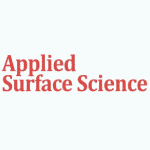 Nanoscale local modification of PMMA refractive index by tip-enhanced femtosecond pulsed laser irradiation
Nanoscale local modification of PMMA refractive index by tip-enhanced femtosecond pulsed laser irradiationAnalyst 148, 3584 (2023)
Infrared nanospectroscopy depth-dependent study of modern materials: morpho-chemical analysis of polyurethane/fibroin binary meshesNanoscale 15, 12000 (2023)
Phonon polaritons in van der Waals polar heterostructures for broadband strong light–matter interactionsACS Nano 17, 12140 (2023)
 Role of Bilayer Graphene Microstructure on the Nucleation of WSe2 Overlayers
Role of Bilayer Graphene Microstructure on the Nucleation of WSe2 OverlayersJournal of Physical Chemistry C 127, 12593 (2023)
 Formation of Anti-Etching Nanopatterns in Field-Emission Scanning Probe Lithography on Calixarene Films
Formation of Anti-Etching Nanopatterns in Field-Emission Scanning Probe Lithography on Calixarene FilmsAdvanced Functional Materials 33, 34 (2023)
 Guest Entrapment in Metal-Organic Nanosheets for Quantifiably Tuneable Luminescence
Guest Entrapment in Metal-Organic Nanosheets for Quantifiably Tuneable LuminescenceOptics Express 31, 22308 (2023)
Pseudoheterodyne interferometry for multicolor near-field imagingMaterials 16, 4277 (2023)
Direct Nanoscale Visualization of the Electric-Field-Induced Aging Dynamics of MAPbI3 Thin FilmsNano Letters 23, 5506 (2023)
 Fast Twist Angle Mapping of Bilayer Graphene Using Spectroscopic Ellipsometric Contrast Microscopy
Fast Twist Angle Mapping of Bilayer Graphene Using Spectroscopic Ellipsometric Contrast MicroscopyeLight 3, 14 (2023)
Source-configured symmetry-broken hyperbolic polaritonsJournal of Materials Chemistry C 11, 10185 (2023)
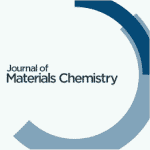 Optical and electronic properties of different thin-film polymorphs of PDIF-CN2 controlled by zone-casting conditions
Optical and electronic properties of different thin-film polymorphs of PDIF-CN2 controlled by zone-casting conditionsFrontiers in Microbiology 14, 1 (2023)
Label-free detection and identification of single bacteria via terahertz near-field imagingNano Letters 23, 5035 (2023)
 Guided Polaritons along the Forbidden Direction in MoO3 with Geometrical Confinement
Guided Polaritons along the Forbidden Direction in MoO3 with Geometrical ConfinementAdvanced Optical Materials 11, 16 (2023)
 A Novel Multi-Functional Thiophene-Based Organic Cation as Passivation, Crystalline Orientation, and Organic Spacer Agent for Low-Dimensional 3D/1D Perovskite Solar Cells
A Novel Multi-Functional Thiophene-Based Organic Cation as Passivation, Crystalline Orientation, and Organic Spacer Agent for Low-Dimensional 3D/1D Perovskite Solar CellsAdvanced Optical Materials 11, 17 (2023)
 Infrared Resonance Tailoring of Individual Split-Ring Resonators with Phase-Change Materials by Locally Changing the Dielectric Surrounding of the Antenna Hotspots
Infrared Resonance Tailoring of Individual Split-Ring Resonators with Phase-Change Materials by Locally Changing the Dielectric Surrounding of the Antenna HotspotsACS Photonics 10, 1841 (2023)
 Focusing of Hyperbolic Phonon Polaritons by Bent Metal Nanowires and Their Polarization Dependence
Focusing of Hyperbolic Phonon Polaritons by Bent Metal Nanowires and Their Polarization DependenceACS Omega 8, 21474 (2023)
Isolation of Mixed Compositions of Cellulose Nanocrystals, Microcrystalline Cellulose, and Lignin Nanoparticles from Wood PulpsNature Communications 14, 2845 (2023)
 Observation of directional leaky polaritons at anisotropic crystal interfaces
Observation of directional leaky polaritons at anisotropic crystal interfacesThe Journal of Physical Chemistry Letters 14, 4892 (2023)
 Near-Field Localization of the Boson Peak on Tantalum Films for Superconducting Quantum Devices
Near-Field Localization of the Boson Peak on Tantalum Films for Superconducting Quantum DevicesNano Letters 23, 5070 (2023)
 Quenched Excitons in WSe2/α-RuCl3 Heterostructures Revealed by Multimessenger Nanoscopy
Quenched Excitons in WSe2/α-RuCl3 Heterostructures Revealed by Multimessenger NanoscopyAdvanced Optical Materials 11, 16 (2023)
 Tailoring the Phonon Polaritons in α-MoO3 via Proton Irradiation
Tailoring the Phonon Polaritons in α-MoO3 via Proton IrradiationMaterials 16, 4277 (2023)
Direct Nanoscale Visualization of the Electric-Field-Induced Aging Dynamics of MAPbI3 Thin FilmsNature Materials 22, 860 (2023)
 Real-space observation of ultraconfined in-plane anisotropic acoustic terahertz plasmon polaritons
Real-space observation of ultraconfined in-plane anisotropic acoustic terahertz plasmon polaritonsNature Communications 14, 2532 (2023)
 Mid-infrared analogue polaritonic reversed Cherenkov radiation in natural anisotropic crystals
Mid-infrared analogue polaritonic reversed Cherenkov radiation in natural anisotropic crystalsACS Photonics 10, 1601 (2023)
 Bias Reconfigurable Photoresponse of an Infrared Nanocrystal Film Integrated into a Coupled Fabry-Perot Resonator
Bias Reconfigurable Photoresponse of an Infrared Nanocrystal Film Integrated into a Coupled Fabry-Perot ResonatorChemistry Europe 10, 11 (2023)
Electrochemical Detection of Silica Nanoparticles by Nanoparticle Imprinted MatricesNano Letters 23, 3985 (2023)
 Dual-Band Coupling of Phonon and Surface Plasmon Polaritons with Vibrational and Electronic Excitations in Molecules
Dual-Band Coupling of Phonon and Surface Plasmon Polaritons with Vibrational and Electronic Excitations in MoleculesChemistry Europe 10, 11 (2023)
Electrochemical Detection of Silica Nanoparticles by Nanoparticle Imprinted MatricesNano Letters 23, 3985 (2023)
 Dual-Band Coupling of Phonon and Surface Plasmon Polaritons with Vibrational and Electronic Excitations in Molecules
Dual-Band Coupling of Phonon and Surface Plasmon Polaritons with Vibrational and Electronic Excitations in MoleculesACS Nano 17, 8233 (2023)
 Nanoscale Enhancement of the Local Optical Conductivity near Cracks in Metallic SrRuO3 Film
Nanoscale Enhancement of the Local Optical Conductivity near Cracks in Metallic SrRuO3 FilmNanoscale Advances 5, 2820 (2023)
Local phonon imaging of AlN nanostructures with nanoscale spatial resolutionNanomaterials 13, 1376 (2023)
Scanning Near-Field Optical Microscopy of Ultrathin Gold FilmsNano Letters 23, 3137 (2023)
 Domain-Dependent Surface Adhesion in Twisted Few-Layer Graphene: Platform for Moiré-Assisted Chemistry
Domain-Dependent Surface Adhesion in Twisted Few-Layer Graphene: Platform for Moiré-Assisted Chemistry2D Materials and Applications 7, 31 (2023)
Twist-tunable polaritonic nanoresonators in a van der Waals crystalNanophotonics (2023)
Terahertz nanospectroscopy of plasmon polaritons for the evaluation of doping in quantum devicesMaterials Degradation 7, 21 (2023)
Protective coatings for ceramic artefacts exposed to UV ageingNano Select 4, 395 (2023)
Characterization and quantification of oxidative stress induced particle debris from polypropylene surgical meshACS Applied Electronic Materials (2023)
High-Performance Organic Field-Effect Transistors Using Rare Earth Metal Oxides as DielectricsACS Nano 17, 6943 (2023)
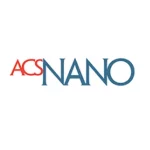 The Effect of the SEI Layer Mechanical Deformation on the Passivity of a Si Anode in Organic Carbonate Electrolytes
The Effect of the SEI Layer Mechanical Deformation on the Passivity of a Si Anode in Organic Carbonate ElectrolytesACS Applied Optical Materials (2023)
Terahertz Nanoscopy of Metal and Gallium Implanted SiliconAdvanced Optical Materials 2202651 (2023)
 Laser-Printed Terahertz Plasmonic Phase-Change Metasurfaces
Laser-Printed Terahertz Plasmonic Phase-Change MetasurfacesNext Materials 100009 (2023)
Nanostructure-dependent indentation fracture toughness of metal-organic framework monolithsAdvanced Materials 2300301 (2023)
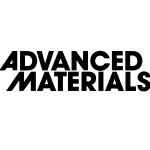 Launching and Manipulation of Higher-Order In-Plane Hyperbolic Phonon Polaritons in Low-Dimensional Heterostructures
Launching and Manipulation of Higher-Order In-Plane Hyperbolic Phonon Polaritons in Low-Dimensional HeterostructuresPhysical Chemistry Chemical Physics 25, 8725 (2023)
Diversity at the nanoscale: laser-oxidation of single-layer graphene affects Fmoc-phenylalanine surface-mediated self-assemblyJournal of Physical Chemistry C (2023)
Raman and Far-Infrared Synchrotron Nanospectroscopy of Layered Crystalline Talc: Vibrational Properties, Interlayer Coupling, and Symmetry CrossoverNature Nanotechnology 18, 529 (2023)
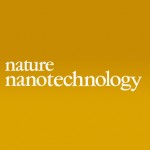 Hyperbolic whispering-gallery phonon polaritons in boron nitride nanotubes
Hyperbolic whispering-gallery phonon polaritons in boron nitride nanotubesAdvanced Healthcare Materials 2202869 (2023)
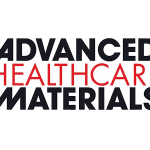 Printed Silk Microelectrode Arrays for Electrophysiological Recoding and Controlled Drug Delivery
Printed Silk Microelectrode Arrays for Electrophysiological Recoding and Controlled Drug DeliveryPolymer 271, 125795 (2023)
Polymerization of aromatic dinitroso derivatives initiated by nitroso-terminated monolayer on Au(111) surface: Insights from ellipsometry, AFM and nano-FTIR spectroscopyResearch Square (2023)
Cubic Fe-bearing majorite synthesized at 18-25 GPa and 1000 °C: implications for element transport, subducted slab rheology and diamond formationCurrent Applied Physics 46, 40 (2023)
Roles of a strain relaxation and an oxygen vacancy on nanoscale inhomogeneities in VO2 thin filmOptics Express 31, 7012 (2023)
Identification of weak molecular absorption in single-wavelength s-SNOM imagesJournal of Infrared, Millimeter, and Terahertz Waves 44, 769 (2023)
Nanoscale-Resolved Spatial Mapping of Tip-Mediated Terahertz Emission from SemiconductorsACS Applied Materials and Interfaces 15, 7562 (2023)
Real-Space Infrared Spectroscopy of Ferroelectric Domain Walls in Multiferroic h-(Lu,Sc)FeO3ACS Applied Materials and Interfaces 15, 6755 (2023)
Nano-FTIR Spectroscopy of the Solid Electrolyte Interphase Layer on a Thin-Film Silicon Li-Ion AnodeResearch Square (2023)
Label-free nanoscale mapping of intracellular organelle chemistryNature Nanotechnology (2023)
 Electrically switchable anisotropic polariton propagation in a ferroelectric van der Waals semiconductor
Electrically switchable anisotropic polariton propagation in a ferroelectric van der Waals semiconductorResearch Square (2023)
Controlling the Propagation Asymmetry of Hyperbolic Shear Polaritons in Beta-Gallium OxideOptical Materials 136, 113447 (2023)
Broadband and ultrafast terahertz modulation with GeTe thin filmsOptical Materials 135, 113237 (2023)
Optical properties of annealed nearly percolated Au thin filmsNanoscale (2023)
Broadband Plasmonic Indium Arsenide Photonic AntennasNature Communications 13, 7856 (2022)
 Micro and nano-scale compartments guide the structural transition of silk protein monomers into silk fibers
Micro and nano-scale compartments guide the structural transition of silk protein monomers into silk fibersNanoscale (2022)
Self-assembled Photonic structure: Ga optical antenna on GaP NanowireNature Nanotechnology (2022)
 Real-space nanoimaging of hyperbolic shear polaritons in a monoclinic crystal
Real-space nanoimaging of hyperbolic shear polaritons in a monoclinic crystalNano Micro Small 2206167 (2022)
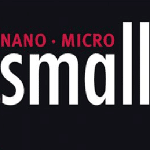 Graphene Coated Dielectric Hierarchical Nanostructures for Highly Sensitive Broadband Infrared Sensing
Graphene Coated Dielectric Hierarchical Nanostructures for Highly Sensitive Broadband Infrared SensingAnalytical Methods (2022)
Multi-feature round silicon membrane filters enable fractionation and analysis of micro- and nanoplastics with Raman spectroscopy and nano-FTIRNature Communications 13, 7587 (2022)
 Unconventional non-local relaxation dynamics in a twisted trilayer graphene moiré superlattice
Unconventional non-local relaxation dynamics in a twisted trilayer graphene moiré superlatticeCurrent Applied Physics 46, 40 (2022)
Roles of a strain relaxation and an oxygen vacancy on nanoscale inhomogeneities in VO2 thin filmApplied Physics Letters 121, 233301 (2022)
Intrinsic polarization-sensitive organic photodetector with self-assembled all-polymer heterojunctionNano Convergence 9, 53 (2022)
Near-field infrared nanoscopic study of EUV- and e-beam-exposed hydrogen silsesquioxane photoresistACS Nano 16, 20174 (2022)
 Germanium Monosulfide as a Natural Platform for Highly Anisotropic THz Polaritons
Germanium Monosulfide as a Natural Platform for Highly Anisotropic THz PolaritonsLangmuir 38, 14517 (2022)
Surface and Structure of Phosphatidylcholine Membranes Reconstructed with CoFe2O4 NanoparticlesNature Communications 13, 6850 (2022)
 Remote near-field spectroscopy of vibrational strong coupling between organic molecules and phononic nanoresonators
Remote near-field spectroscopy of vibrational strong coupling between organic molecules and phononic nanoresonatorsCarbohydrate Polymers 302, 120320 (2022)
Elucidating the fine-scale structural morphology of nanocellulose by nano infrared spectroscopyReview of Scientific Instruments 93, 114902 (2022)
Nanoscale thermometry under ambient conditions via scanning thermal microscopy with 3D scanning differential methodAdvanced Optical Materials 11, 2202137 (2022)
 Tunable, Homoepitaxial Hyperbolic Metamaterials Enabled by High Mobility CdO
Tunable, Homoepitaxial Hyperbolic Metamaterials Enabled by High Mobility CdOJournal of Non-Crystalline Solids 600, 121989 (2022)
Revealing the structure of the sodium-leached layer of soda lime silica glass: A comprehensive spectroscopic analysisJournal of the American Chemical Society 144, 20278 (2022)
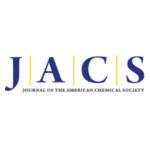 Single-Vesicle Infrared Nanoscopy for Noninvasive Tumor Malignancy Diagnosis
Single-Vesicle Infrared Nanoscopy for Noninvasive Tumor Malignancy DiagnosisNature Communications 13, 6281 (2022)
 Nanometer-scale photon confinement in topology-optimized dielectric cavities
Nanometer-scale photon confinement in topology-optimized dielectric cavitiesACS Photonics 9, 3696 (2022)
 Near-Field Retrieval of the Surface Phonon Polariton Dispersion in Free-Standing Silicon Carbide Thin Films
Near-Field Retrieval of the Surface Phonon Polariton Dispersion in Free-Standing Silicon Carbide Thin FilmsColloids and Surfaces B: Biointerfaces 221, 112954 (2022)
Infrared imaging of surface confluent polydopamine (PDA) films at the nanoscaleAdvanced Functional Materials 2208761 (2022)
 Percolating Superconductivity in Air-Stable Organic-Ion Intercalated MoS2
Percolating Superconductivity in Air-Stable Organic-Ion Intercalated MoS2Analytical Chemistry 94, 14815 (2022)
A Nanofocused Light on Stradivari Violins: Infrared s-SNOM Reveals New Clues Behind Craftsmanship MasteryACS Nano 16, 16497 (2022)
 Melimine-Modified 3D-Printed Polycaprolactone Scaffolds for the Prevention of Biofilm-Related Biomaterial Infections
Melimine-Modified 3D-Printed Polycaprolactone Scaffolds for the Prevention of Biofilm-Related Biomaterial InfectionsNanoscale, Advance Article (2022)
Nano-optical imaging of exciton–plasmon polaritons in WSe2/Au heterostructuresJournal of Applied Physics 132, 174301 (2022)
Nanoscale infrared imaging and spectroscopy of few-layer hexagonal boron nitrideScientific Reports 12, 15761 (2022)
Lightwave nano-converging enhancement by an arrayed optical antenna based on metallic nano-cone-tips for CMOS imaging detectionACS Applied Energy Materials 5, 11655 (2022)
Molecular Langmuir–Blodgett Film for Silicon Anode Interface EngineeringAdvanced Optical Materials 2201492 (2022)
 Low-Loss Anisotropic Image Polaritons in van der Waals Crystal α-MoO3
Low-Loss Anisotropic Image Polaritons in van der Waals Crystal α-MoO3Nature Photonics 16, 698 (2022)
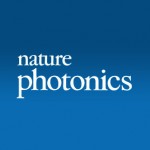 Towards compact phase-matched and waveguided nonlinear optics in atomically layered semiconductors
Towards compact phase-matched and waveguided nonlinear optics in atomically layered semiconductorsNature Nanotechnology 17, 940 (2022)
 Doping-driven topological polaritons in graphene/α-MoO3 heterostructures
Doping-driven topological polaritons in graphene/α-MoO3 heterostructuresPhysical Review Applied 18, 024052 (2022)
Imaging Stacking-Dependent Surface Plasmon Polaritons in Trilayer GrapheneNature Communications 13, 4511 (2022)
 Reconfigurable hyperbolic polaritonics with correlated oxide metasurfaces
Reconfigurable hyperbolic polaritonics with correlated oxide metasurfacesApplied Surface Science 599, 153959 (2022)
High throughput investigation of an emergent and naturally abundant 2D material: ClinochlorePNAS 119, e2200019119 (2022)
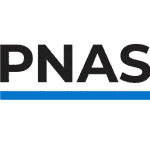 In vitro investigation of protein assembly by combined microscopy and infrared spectroscopy at the nanometer scale
In vitro investigation of protein assembly by combined microscopy and infrared spectroscopy at the nanometer scaleScience Advances 8, eabn9774 (2022)
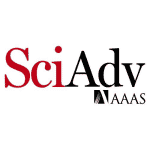 Unidirectionally excited phonon polaritons in high-symmetry orthorhombic crystals
Unidirectionally excited phonon polaritons in high-symmetry orthorhombic crystalsScience Advances 8, abp8486 (2022)
Negative reflection of nanoscale-confined polaritons in a low-loss natural mediumNature Communications 13, 4187 (2022)
 Interplay between topological valley and quantum Hall edge transport
Interplay between topological valley and quantum Hall edge transporteLight 2, 12 (2022)
Spin-orbit-locked hyperbolic polariton vortices carrying reconfigurable topological chargesNanoscale 14, 12257 (2022)
A planar plasmonic nano-gap and its array for enhancing light-matter interactions at the nanoscaleAdvanced Science Online Version, 2200410 (2022)
Self-Induced Phase Locking of Terahertz Frequency Combs in a Phase-Sensitive Hyperspectral Near-Field NanoscopeNano Energy 98, 107252 (2022)
Multilevel Memory and Artificial Synaptic Plasticity in P(VDF-TrFE)-Based Ferroelectric Field Effect TransistorsiScience 25, 104637 (2022)
A terahertz near-field nanoscopy revealing edge fringes with a fast and highly sensitive quantum-well photodetectorScience Advances 8, 28 (2022)
 Near-field probing of image phonon-polaritons in hexagonal boron nitride on gold crystals
Near-field probing of image phonon-polaritons in hexagonal boron nitride on gold crystalsnpj Quantum Materials 7, 72 (2022)
Insulator-to-metal transition in ultrathin rutile VO2/TiO2(001)Nano Letters 22, 5759 (2022)
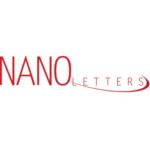 Ultimate Limit for Optical Losses in Gold, Revealed by Quantitative Near-Field Microscopy
Ultimate Limit for Optical Losses in Gold, Revealed by Quantitative Near-Field MicroscopyNature Communications 13, 3719 (2022)
 Surface plasmons induce topological transition in graphene/α-MoO3 heterostructures
Surface plasmons induce topological transition in graphene/α-MoO3 heterostructuresACS Nano 16, 9041 (2022)
 Engineering Graphene Grain Boundaries for Plasmonic Multi-Excitation and Hotspots
Engineering Graphene Grain Boundaries for Plasmonic Multi-Excitation and HotspotsSustainable Energy and Fuels 6, 3485 (2022)
Oxidative polymerization of triarylamines: a promising route to low-cost hole transport materials for efficient perovskite solar cellsNature Communications 13-3105 (2022) (2022)
 Extremely confined gap plasmon modes: when nonlocality matters
Extremely confined gap plasmon modes: when nonlocality mattersSustainable Energy Fuels 6, 3542 (2022)
Novel benzodithiophene-TTBTBTT copolymers: synthesis and investigation in organic and perovskite solar cellsApplied Surface Science 586,152690 (2022)
Perfluoropentacene thin films on Au(1 1 1) surfaces: Effect of kinetic energy and vibrational propertiesJournal of Materials Processing Technology 306, 117640 (2022)
Enhanced corrosion resistance in accident-tolerant FeCrAl alloy by water-assisted laser surface modificationApplied Physics Letters 120, 211107 (2022)
Investigation of low-confinement surface phonon polariton launching on SiC and SrTiO3 using scanning near-field optical microscopyZhu et al., Nature Materials 21, 656–663 (2022) (2022)
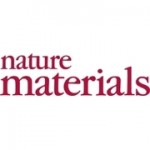 Single-junction organic solar cells with over 19% efficiency enabled by a refined double-fibril network morphology
Single-junction organic solar cells with over 19% efficiency enabled by a refined double-fibril network morphologyAdvanced Optical Materials 10, 2102723 (2022)
 Altering the Reflection Phase for Nano-Polaritons: A Case Study of Hyperbolic Surface Polaritons in Hexagonal Boron Nitride
Altering the Reflection Phase for Nano-Polaritons: A Case Study of Hyperbolic Surface Polaritons in Hexagonal Boron NitrideJournal of the American Chemical Society 144, 8848 (2022)
 Unraveling Molecular Fingerprints of Catalytic Sulfur Poisoning at the Nanometer Scale with Near-Field Infrared Spectroscopy
Unraveling Molecular Fingerprints of Catalytic Sulfur Poisoning at the Nanometer Scale with Near-Field Infrared SpectroscopyJournal of Physical Chemisty C 126, 7764 (2022)
Hierarchical Self-Assembly and Chemical Imaging of Nanoscale Domains in Polymer Blend Thin FilmsPolymer 246, 124723 (2022)
Solvent-structured PEDOT:PSS surfaces: Fabrication strategies and nanoscale propertiesJournal of Geophysical Research: Planets 127, e2021JE007166 (2022)
Nano-FTIR Investigation of the CM Chondrite Allan Hills 83100Nano Energy 98, 107252 (2022)
Multilevel memory and artificial synaptic plasticity in P(VDF-TrFE)-based ferroelectric field effect transistorsAdvanced Energy Materials 12, 2200186 (2022)
Plasmonic Local Heating Induced Strain Modulation for Enhanced Efficiency and Stability of Perovskite Solar CellsAdvanced Energy Materials 12, 2200186 (2022)
Plasmonic Local Heating Induced Strain Modulation for Enhanced Efficiency and Stability of Perovskite Solar CellsApplied Physics Letters 120, 131601 (2022)
Pseudoheterodyne near-field imaging at kHz repetition rates via quadrature-assisted discrete demodulationACS Applied Materials and Interfaces 14, 15461 (2022)
Advanced Nonvolatile Organic Optical Memory Using Self-Assembled Monolayers of Porphyrin–Fullerene DyadsASC Omega 7, 11353 (2022)
Scattering-type Scanning Near-Field Optical Microscopy of Polymer-Coated Gold NanoparticlesOptics Express 30, 11619 (2022)
Quantitative modeling of near-field interactions incorporating polaritonic and electrostatic effectsNano Letters 22, 2755 (2022)
 Revealing the Interaction of Charge Carrier–Phonon Coupling by Quantification of Electronic Properties at the SrTiO3/TiO2 Heterointerface
Revealing the Interaction of Charge Carrier–Phonon Coupling by Quantification of Electronic Properties at the SrTiO3/TiO2 HeterointerfaceNano Letters 22, 3495 (2022)
 Direct Visualization of Ultrastrong Coupling between Luttinger-Liquid Plasmons and Phonon Polaritons
Direct Visualization of Ultrastrong Coupling between Luttinger-Liquid Plasmons and Phonon PolaritonsJournal of Physical Chemistry Letters 13, 2744 (2022)
Nanoscale Visualization of Photodegradation Dynamics of MAPbI3 Perovskite FilmsNature Communications 13, 1465 (2022)
 Active Control of Micrometer Plasmon Propagation in Suspended Graphene
Active Control of Micrometer Plasmon Propagation in Suspended GrapheneNature Communications 13, 1398 (2022)
 In situ infrared nanospectroscopy of the local processes at the Li/polymer electrolyte interface
In situ infrared nanospectroscopy of the local processes at the Li/polymer electrolyte interfaceOptics Express 30-11181 (2022) (2022)
Quantitative near-field characterization of surface plasmon polaritons on monocrystalline gold plateletsNature Communications 13, 1374 (2022)
 Real-space nanoimaging of THz polaritons in the topological insulator Bi2Se3
Real-space nanoimaging of THz polaritons in the topological insulator Bi2Se3Applied Materials Today 27, 101434 (2022)
Nanoconfinement of tetraphenylethylene in zeolitic metal-organic framework for turn-on mechanofluorochromic stress sensingLight: Science & Applications 11, 53 (2022)
Hybrid Dirac Semimetal-Based Photodetector with Efficient Low-Energy Photon HarvestingACS Applied Nano Materials 5, 6398 (2022)
Defect Engineering in Metal–Organic Framework Nanocrystals: Implications for Mechanical Properties and PerformanceAdvanced Materials 34, 2105590 (2022)
Tunable Planar Focusing Based on Hyperbolic Phonon Polaritons in α-MoO3Spectrochimica Acta Part A 274, 121095 (2022)
In-depth Probing of Thermally-driven Phase Separation Behavior of Lamella-forming PS-b-PMMA Films by Infrared NanoscopyMaterials Today Nano 17, 100166 (2022)
Mechanical properties and nanostructure of monolithic zeolitic imidazolate frameworks: a nanoindentation, nanospectroscopy, and finite element studyACS Applied Energy Materials 5, 5395 (2022)
Design Principles for Organic Small Molecule Hole-Transport Materials for Perovskite Solar Cells: Film Morphology MattersACS Sustainable Chemistry and Engineering 10, 3016 (2022)
Nanoscale FTIR and Mechanical Mapping of Plant Cell Walls for Understanding Biomass DeconstructionNature Communications 13, 983 (2022)
 Strong in-plane scattering of acoustic graphene plasmons by surface atomic steps
Strong in-plane scattering of acoustic graphene plasmons by surface atomic stepsACS Photonics 9, 443 (2022)
In-Plane Anisotropy in Biaxial ReS2 Crystals Probed by Nano-Optical Imaging of Waveguide ModesNano Letters 22, 1525 (2022)
 Vibrational Properties in Highly Strained Hexagonal Boron Nitride Bubbles
Vibrational Properties in Highly Strained Hexagonal Boron Nitride BubblesAdvanced Photonics Research 3, 2100334 (2022)
Coupled Molecular Emitters in Superstructures Interact with Plasmonic NanoparticlesLangmuir 38, 1910 (2022)
Evidence of One-Dimensional Channels in Hydrogen-Bonded Organic Porous Thin Films Fabricated at the Air/Liquid InterfaceNature Communications 13, 542 (2022)
 Nano-spectroscopy of excitons in atomically thin transition metal dichalcogenides
Nano-spectroscopy of excitons in atomically thin transition metal dichalcogenidesACS Applied Materials and Interfaces 14,7161 (2022)
Silicon-Doped Graphene Oxide Quantum Dots as Efficient Nanoconjugates for Multifunctional NanocompositesNanotechnology 33, 16 (2022)
Nanometer-scaled landscape of polymer: fullerene blends mapped with visible s-SNOMApplied Surface Science 584, 152583 (2022)
Near-field infrared spectroscopy of SiOx nanowiresACS Nano 16, 2598 (2022)
 Multidimensional Imaging Reveals Mechanisms Controlling Multimodal Label-Free Biosensing in Vertical 2DM-Heterostructures
Multidimensional Imaging Reveals Mechanisms Controlling Multimodal Label-Free Biosensing in Vertical 2DM-HeterostructuresACS Nano 16, 3027 (2022)
 Ultrahigh-Quality Infrared Polaritonic Resonators Based on Bottom-Up-Synthesized van der Waals Nanoribbons
Ultrahigh-Quality Infrared Polaritonic Resonators Based on Bottom-Up-Synthesized van der Waals NanoribbonsAdvanced Photonics Research 3, 2100354 (2022)
Ultraviolet/Visible Quasicylindrical Waves on Semimetal Cd3As2 NanoplatesACS Applied Energy Materials 5, 5388 (2022)
Molecular Engineering of Polytriarylamine-Based Hole-Transport Materials for p–i–n Perovskite Solar Cells: Methyl Groups MatterNature Communications 13, 305 (2022)
 Hierarchically encapsulating enzymes with multi-shelled metal-organic frameworks for tandem biocatalytic reactions
Hierarchically encapsulating enzymes with multi-shelled metal-organic frameworks for tandem biocatalytic reactionsAdvanced Materials, Early View (2021)
Active and Passive Tuning of ultra-narrow Resonances in Polaritonic NanoantennasAdvanced Optical Materials 10, 2102057 (2022) (2021)
Tunable Hyperbolic Phonon Polaritons in a Suspended van Der Waals α-MoO3 with Gradient GapsOptics Express 30, 225 (2021)
Van der Waals materials as dielectric layers for tailoring the near-field photonic response of surfacesNanophotonics, 11, 377 (2021)
High-fidelity nano-FTIR spectroscopy by on-pixel normalization of signal harmonicsPhys. Rev. B. 104, 235433 (2021)
Hyperspectral infrared imaging of surface phonon-polaritons in SrTiO 3Science Advances 7, eabl3903 (2021)
Observing 0D subwavelength-localized modes at ~100 THz protected by weak topologyCommunications Biology 4, 1341 (2021)
Infrared nanoscopy and tomography of intracellular structuresCorrosion Science, 195 109995 (2021)
Initial atmospheric corrosion studies of copper from macroscale to nanoscale in a simulated indoor atmospheric environmentACS Nano, 15, 12, 20466–20477 (2021)
Liquid Phase Exfoliation of Rubrene Single Crystals into Nanorods and NanobeltsNature Communications 12, 6672 (2021)
 Mapping propagation of collective modes in Bi2Se3 and Bi2Te2.2Se0.8 topological insulators by near-field terahertz nanoscopy
Mapping propagation of collective modes in Bi2Se3 and Bi2Te2.2Se0.8 topological insulators by near-field terahertz nanoscopyAdvanced Functional Materials, Early View (2021)
Charge Transport in Single-Crystalline GaAs Nanobars: Impact of Band Bending Revealed by Terahertz SpectroscopyACS Earth Space Chem. , 5, 12, 3281–3296 (2021)
Nanoscale Infrared Characterization of Dark Clasts and Fine-Grained Rims in CM2 Chondrites: Aguas Zarcas and Jbilet WinselwanNanotechnology 33, 065503 (2021)
Probing peptide nanowire conductivity by THz nanoscopyScientific Reports 11, 21860 (2021)
Infrared-spectroscopic, dynamic near-field microscopy of living cells and nanoparticles in waterOptics Express 29, 37161 (2021)
Experimental observation of the short-range surface plasmon polariton mode and its longitudinal adiabatic compression in a metallic wedgeJournal of Colloid and Interface Science 605, 441 (2021)
Solid-state polymer adsorption for surface modification: The role of molecular weightApplied Surface Science 574, 151672 (2021)
Probing the local dielectric function of WS2 on an Au substrate by near field optical microscopy operating in the visible spectral rangeAdvanced Energy Materials, Early View (2021)
In Situ Infrared Micro and Nanospectroscopy for Discharge Chemical Composition Investigation of Non-Aqueous Lithium–Air CellsACS Photonics 12, 3486 (2021)
Tip Coupling and Array Effects of Gold Nanoantennas in Near-Field MicroscopyACS Photonics, 8, 12, 3486–3494 (2021)
Tip Coupling and Array Effects of Gold Nanoantennas in Near-Field MicroscopyAdvanced Materials, Early View (2021)
Thermoplastic Elastomer Tunes Phase Structure and Promotes Stretchability of High-Efficiency Organic Solar CellsACS Appl. Mater. Interfaces 13,49402 (2021)
High-Resolution Microscopical Studies of Contact Killing Mechanisms on Copper-Based SurfacesACS Photonics 8, 2904 (2021)
Nonlocal Time-Resolved Terahertz Spectroscopy in the Near FieldNature Communications 12, 5741 (2021)
 Nanoscale lattice dynamics in hexagonal boron nitride moiré superlattices
Nanoscale lattice dynamics in hexagonal boron nitride moiré superlatticesNature Physics 17, 1162 (2021)
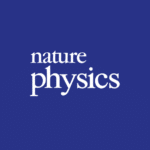 Observation of interband collective excitations in twisted bilayer graphene
Observation of interband collective excitations in twisted bilayer grapheneCells 10, 2559 (2021)
Nano-Infrared Imaging of Primary NeuronsACS Appl. Nano Mater. 4, 10321 (2021)
Tunable Fluorescein-Encapsulated Zeolitic Imidazolate Framework-8 Nanoparticles for Solid-State LightingACS Photonics 8, 2987 (2021)
Hybrid Machine Learning for Scanning Near-Field Optical SpectroscopyACS Photonics 8,3017 (2021)
Ultrabroadband Nanocavity of Hyperbolic Phonon–Polaritons in 1D-Like α-MoO3Appl. Phys. Lett. 119, 091101 (2021)
Near-field terahertz nanoscopy of coplanar microwave resonatorsCorrosion Science, 192, 109777 (2021)
Corrosion inhibition of copper with octadecylphosphonic acid (ODPA) in a simulated indoor atmospheric environmentNano Research, online version (2021)
Infrared nanoimaging of nanoscale sliding dislocation of collagen fibrilsAppl. Phys. Lett. 118, 163105 (2021)
Violet phosphorus surface chemical degradation in comparison to black phosphorusNature Communications 12, 4325 (2021)
 Planar refraction and lensing of highly confined polaritons in anisotropic media
Planar refraction and lensing of highly confined polaritons in anisotropic mediaChemical Geology 852, 120427 (2021)
Characterization of Eocene flintACS Appl. Mater. Interfaces 13, 32894 (2021)
1,10-Phenanthroline as an Efficient Bifunctional Passivating Agent for MAPbI3 Perovskite Solar CellsCement and Concrete Research 147, 106525 (2021)
Near-field infrared microscopy: A novel analytic mapping technique to nanocharacterize calcium silicate-based cement materialsNanoscale, Advance Article (2021)
Unravelling the coupling of surface plasmons in carbon nanotubes by near-field nanoscopyAPL Photonics 6, 061302 (2021)
Terahertz near-field nanoscopy based on detectorless laser feedback interferometry under different feedback regimesJ. Mater. Chem. C, 9, 9515 (2021)
Optimized active layer morphology via side-chain atomic substituents to achieve efficient and stable all-polymer solar cellsAPL Photonics 6, 066106 (2021)
Near-infrared nanospectroscopy using a low-noise supercontinuum sourceCommunications Materials 2, 59 (2021)
In situ plant materials hyperspectral imaging by multimodal scattering near-field optical microscopyNature Chemistry, 13, 730 (2021)
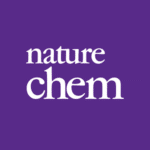 On-surface photopolymerization of two-dimensional polymers ordered on the mesoscale
On-surface photopolymerization of two-dimensional polymers ordered on the mesoscaleScientific Reports 11, 11656 (2021)
Nano-FTIR spectroscopic identification of prebiotic carbonyl compounds in Dominion Range 08006 carbonaceous chondritePhys. Rev. B 103, 235409 (2021)
Strong light-matter coupling in MoS2Nanoletters, 21, 12, 5151–5157 (2021)
 Nanoinfrared Characterization of Bilayer Graphene Conductivity under Dual-Gate Tuning
Nanoinfrared Characterization of Bilayer Graphene Conductivity under Dual-Gate TuningPhys. Rev. B 103, L201407 (2021)
Nonequilibrium phonon tuning and mapping in few-layer graphene with infrared nanoscopyAdvanced Materials 33, 2004376 (2021)
Near-Field Characterization of Higher-Order Topological Photonic States at Optical FrequenciesNature Photonics, 15, 594 (2021)
 Subcycle contact-free nanoscopy of ultrafast interlayer transport in atomically thin heterostructures
Subcycle contact-free nanoscopy of ultrafast interlayer transport in atomically thin heterostructuresNature Communications 12, 2649 (2021)
 Probing subwavelength in-plane anisotropy with antenna-assisted infrared nano-spectroscopy
Probing subwavelength in-plane anisotropy with antenna-assisted infrared nano-spectroscopyPolymer 226, 123812 (2021)
Nanostructural organization of thin films prepared by sequential dip-coating deposition of poly(butylene succinate), poly(ε-caprolactone) and their copolyesters (PBS-ran-PCL)Advanced Science, Early View 2004872 (2021)
Van der Waals Phonon Polariton Microstructures for Configurable Infrared Electromagnetic Field Localizations2D Materials 8, 035020 (2021)
Exploring few and single layer CrPS4 with near-field infrared spectroscopyNanomaterials 11, 1103 (2021)
Modifications upon Immobilization onto Clay NanotubesJ. Phys. Chem. C 125, 9229 (2021)
Nanoimaging of Orientational Defects in Semiconducting Organic FilmsAvanced Optical Materials 9, 2100294 (2021)
Edge-Orientation Dependent Nanoimaging of Mid-Infrared Waveguide Modes in High-Index PtSe2ACS Appl. Nano Mater. 5, 4335 (2021)
Polaritonic Enhancement of Near-Field Scattering of Small Molecules Encapsulated in Boron Nitride Nanotubes: Chemical Reactions in Confined SpacesLight: Science & Applications 10, 84 (2021)
Quantification of electron accumulation at grain boundaries in perovskite polycrystalline films by correlative infrared-spectroscopic nanoimaging and Kelvin probe force microscopyActa Materialia 208, 116694 (2021)
Subsurface structural change of silica upon nanoscale physical contact: Chemical plasticity beyond topographic elasticityAppl. Phys. Lett. 118 131107 (2021)
Experimental verification of a plasmonic hook in a dielectric Janus particleScience Advances 7, eabf2690 (2021)
Enabling propagation of anisotropic polaritons along forbidden directions via a topological transitionNature Communications 12, 1995 (2021)
 Sub-diffractional cavity modes of terahertz hyperbolic phonon polaritons in tin oxid
Sub-diffractional cavity modes of terahertz hyperbolic phonon polaritons in tin oxidACS Photonics 8, 1001 (2021)
All-Electronic Phase-Resolved THz Microscopy Using the Self-Mixing Effect in a Semiconductor LaserNano Letters, 21, 7, 3112–3119 (2021)
 Hybridized Hyperbolic Surface Phonon Polaritons at α-MoO3 and Polar Dielectric Interfaces
Hybridized Hyperbolic Surface Phonon Polaritons at α-MoO3 and Polar Dielectric InterfacesAdvanced Optical Materials, Early View (2021)
A Nano‐Imaging Study of Graphene Edge Plasmons with Chirality‐Dependent DispersionsAdvanced Materials, Early View (2021)
High‐Efficiency Organic Photovoltaics using Eutectic Acceptor Fibrils to Achieve Current AmplificationCarbon 177, 282 (2021)
Synthesis of large-area rhombohedral few-layer graphene by chemical vapor deposition on copperNature Communications 12, 1640 (2021)
 Nano-imaging photoresponse in a moiré unit cell of minimally twisted bilayer graphene
Nano-imaging photoresponse in a moiré unit cell of minimally twisted bilayer grapheneNature Communications 12,1641 (2021)
 Hyperbolic enhancement of photocurrent patterns in minimally twisted bilayer graphene
Hyperbolic enhancement of photocurrent patterns in minimally twisted bilayer grapheneSmall, online version 2100079 (2021)
Hybridized Radial and Edge Coupled 3D Plasmon Modes in Self‐Assembled Graphene NanocylindersACS Nano, 15, 3, 5600–5609 (2021)
One-dimensional van der Waals Heterojunction DiodeNanoscale 12, 5402 (2021)
Evolution of near- and far-field optical properties of Au bipyramids upon epitaxial deposition of AgPhysical Review B 103, 075431 (2021)
Electronic transport in submicrometric channels at the LaAlO3/SrTiO3 interfaceNature Communications 12, 938 (2021)
 Real-space imaging of acoustic plasmons in large-area graphene grown by chemical vapor deposition
Real-space imaging of acoustic plasmons in large-area graphene grown by chemical vapor depositionNature Communications 12, 924 (2021)
 In3SbTe2 as a programmable nanophotonics material platform for the infrared
In3SbTe2 as a programmable nanophotonics material platform for the infraredNano Letters, 21, 4, 1822–1830 (2021)
 High-Quality All-Inorganic Perovskite CsPbBr3 Microsheet Crystals as Low-Loss Subwavelength Exciton–Polariton Waveguides
High-Quality All-Inorganic Perovskite CsPbBr3 Microsheet Crystals as Low-Loss Subwavelength Exciton–Polariton WaveguidesNature Communications 12, 854 (2021)
 Giant optical anisotropy in transition metal dichalcogenides for next-generation photonics
Giant optical anisotropy in transition metal dichalcogenides for next-generation photonicsACS Nano, 15, 2, 2447–2457 (2021)
Photodegradation Protection in 2D In-Plane Heterostructures Revealed by Hyperspectral Nanoimaging: The Role of Nanointerface 2D AlloysACS Appl. Mater. Interfaces 13, 7801 (2021)
Facile and Fast Transformation of Nonluminescent to Highly Luminescent Metal–Organic Frameworks: Acetone Sensing for Diabetes Diagnosis and Lead Capture from Polluted WaterNanoscale, Advance Article (2021)
Polariton waveguide modes in two-dimensional van der Waals crystals: an analytical model and correlative nano-imagingNano Letters, 21, 3, 1360–1367 (2021)
 Amplitude- and Phase-Resolved Infrared Nanoimaging and Nanospectroscopy of Polaritons in a Liquid Environment
Amplitude- and Phase-Resolved Infrared Nanoimaging and Nanospectroscopy of Polaritons in a Liquid EnvironmentACS Photonics, 8, 2, 418–423 (2021)
Tunable s-SNOM for Nanoscale Infrared Optical Measurement of Electronic Properties of Bilayer GrapheneNano Energy 77, 105147 (2021)
Developement of highly efficient large area organic photovoltaic module: Effects of nonfullerene acceptorJapanese Journal of Applied Physics, Accepted Manuscript (2021)
Nanoscale evaluation of the number of layers of hexagonal boron nitride by scattering-type scanning near-field optical microscopyApplied Physics Letters 118, 041103 (2021)
Optical constants from scattering-type scanning near-field optical microscopeMaterials Today, 46, 54 (2021)
Periodical concentration of surface plasmon polaritons by wave interference in metallic film with nanocavity arrayNature Communications 12, 242 (2021)
 Moiré metrology of energy landscapes in van der Waals heterostructures
Moiré metrology of energy landscapes in van der Waals heterostructuresScientific Reports 11, 590 (2021)
Nanodiamond surface chemistry controls assembly of polypyrrole and generation of photovoltageMacromolecules, 54, 2, 995–1005 (2021)
Cross-Sectional Chemical Nanoimaging of Composite Polymer Nanoparticles by Infrared NanospectroscopyACS Materials Lett., 3, 2, 217–223 (2021)
One-Pot Confined Epitaxial Growth of 2D Heterostructure ArraysNanomaterials 11, 120 (2021)
Extracting the Infrared Permittivity of SiO2 Substrates Locally by Near-Field Imaging of Phonon Polaritons in a van der Waals CrystalAdvanced Materials 33, 2006435 (2021)
Buried Interfaces in Halide Perovskite PhotovoltaicsSmall, online version 2005814 (2020)
Near‐Field Nanoscopic Terahertz Imaging of Single ProteinsACS Photonics, Article ASAP (2020)
Terahertz Nanoimaging and Nanospectroscopy of Chalcogenide Phase-Change MaterialsNature Communications 11, 6085 (2020)
 Edge-oriented and steerable hyperbolic polaritons in anisotropic van der Waals nanocavities
Edge-oriented and steerable hyperbolic polaritons in anisotropic van der Waals nanocavitiesGigaScience 9, giaa129 (2020)
SSNOMBACTER: A collection of scattering-type scanning near-field optical microscopy and atomic force microscopy images of bacterial cellsNature Photonics 15, 197 (2020)
 Real-space observation of vibrational strong coupling between propagating phonon polaritons and organic molecules
Real-space observation of vibrational strong coupling between propagating phonon polaritons and organic moleculesLight Science & Applications 9, 189 (2020)
Unveiling the detection dynamics of semiconductor nanowire photodetectors by terahertz near-field nanoscopyJ. Phys. Chem. Lett. 11, 9476 (2020)
Nanoscale Probing of Cholesterol-Rich Domains in Single Bilayer Dimyristoyl-Phosphocholine Membranes Using Near-Field Spectroscopic ImagingACS Applied Materials and Interfaces 12, 50039 (2020)
Dual-Ionomer-Based Device: Acetylcholine Transport and Nonenzymatic SensingLight: Science & Applications 9, 174 (2020)
Light-induced irreversible structural phase transition in trilayer graphenePhys. Rev. Applied 14, 044006 (2020)
Multiple Tunable Hyperbolic Resonances in Broadband Infrared Carbon-Nanotube MetamaterialsJ. Phys. Chem. C. 124, 22711 (2020)
Switching a Plasmon-Driven Reaction Mechanism from Charge Transfer to Adsorbate Electronic Excitation Using Surface LigandsACS Photonics 7,2878 (2020)
Rapid Infrared Spectroscopic Nano-Imaging with nano-FTIR HolographyNano Letters 20, 7933 (2020)
 Quantitative Nano-Infrared Spectroscopy of Anisotropic van der Waals Materials
Quantitative Nano-Infrared Spectroscopy of Anisotropic van der Waals MaterialsJ. Phys. Chem. C 124, 21018 (2020)
Molecular Sensitivity of Near-Field Vibrational Infrared ImagingAppl. Phys. Lett. 117, 101104 (2020)
Nanospectroscopy of a single patch antenna strongly coupled to a mid-infrared intersubband transition in a quantum wellAdvanced Functional Materials, Early View (2020)
Phonon‐Enhanced Near‐Field Spectroscopy to Extract the Local Electronic Properties of Buried 2D Electron Systems in Oxide HeterostructuresNano Letters 20, 7446 (2020)
 Near-field infrared nanospectroscopy reveals guest confinement in metal-organic framework single crystals
Near-field infrared nanospectroscopy reveals guest confinement in metal-organic framework single crystalsAnal. Chem. 92, 13694 (2020)
FTIR Nanospectroscopy Shows Molecular Structures of Plant Biominerals and Cell WallsNature Communications 11, 4209 (2020)
 In situ nanoscale imaging of moiré superlattices in twisted van der Waals heterostructures
In situ nanoscale imaging of moiré superlattices in twisted van der Waals heterostructuresNano Letters 20, 2958 (2020)
 Nano-photocurrent Mapping of Local Electronic Structure in Twisted Bilayer Graphene
Nano-photocurrent Mapping of Local Electronic Structure in Twisted Bilayer GrapheneCommun Mater 1, 57 (2020)
High performance crystalline nanocellulose using an ancestral endoglucanaseNature Nanotechnology, online article (2020)
 A rewritable optical storage medium of silk proteins using near-field nano-optics
A rewritable optical storage medium of silk proteins using near-field nano-opticsNano Letters 20, 6364 (2020)
 Ultrathin Free-Standing Oxide Membranes for Electron and Photon Spectroscopy Studies of Solid–Gas and Solid–Liquid Interfaces
Ultrathin Free-Standing Oxide Membranes for Electron and Photon Spectroscopy Studies of Solid–Gas and Solid–Liquid InterfacesPNAS 117, 19201 (2020)
Protein nanoribbons template enamel mineralizationNature Communications 11, 3663 (2020)
 Collective near-field coupling and nonlocal phenomena in infrared-phononic metasurfaces for nano-light canalization
Collective near-field coupling and nonlocal phenomena in infrared-phononic metasurfaces for nano-light canalizationJournal of Catalysis 387, 119 (2020)
Rational electronic control of carbon dioxide reduction over cobalt oxideJournal of Applied Physics 128, 024305 (2020)
High-field electromagnetic radiation converts carbon nanotubes to nanoribbons embedded with carbon nanocrystalsNature Communications 11, 3359 (2020)
 Subsurface chemical nanoidentification by nano-FTIR spectroscopy
Subsurface chemical nanoidentification by nano-FTIR spectroscopyACS Nano, Articles ASAP (2020)
Near-Field Spectroscopy of Cylindrical Phonon-Polariton AntennasOptics Express 28, 18788 (2020)
Laser THz emission nanoscopy and THz nanoscopyOptics Letters 45, 3244 (2020)
Plasmonic nanojet: an experimental demonstrationPhys. Rev. Research 2, 023272 (2020)
Near-field infrared nanospectroscopy of surface phonon-polariton resonancesAdvanced Materials, Early View (2020)
Infrared Permittivity of the Biaxial van der Waals Semiconductor α‐MoO3 from Near‐ and Far‐Field Correlative StudiesNature Communications 11, 2646 (2020)
 Chemical switching of low-loss phonon polaritons in α-MoO3 by hydrogen intercalation
Chemical switching of low-loss phonon polaritons in α-MoO3 by hydrogen intercalationACS Photonics 7, 1396 (2020)
Acceleration of Subwavelength Polaritons by Engineering Dielectric-Metallic SubstratesAppl. Phys. Lett. 116, 191105 (2020)
Near-field mapping of the edge mode of a topological valley slab waveguide at λ = 1.55 μmScience Advances 6, eaaz0566 (2020)
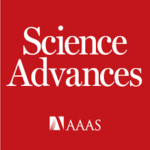 Watching in situ the hydrogen diffusion dynamics in magnesium on the nanoscale
Watching in situ the hydrogen diffusion dynamics in magnesium on the nanoscaleACS Appl. Mater. Interfaces 12, 24218 (2020)
Pyramid-Shaped Single-Crystalline Nanostructure of Molybdenum with Excellent Mechanical, Electrical, and Optical PropertiesACS Nano, Article ASAP (2020)
Infrared Nanoimaging of Surface Plasmons in Type-II Dirac Semimetal PtTe2 NanoribbonsNature Communications 11, 1863 (2020)
 Resonant nanostructures for highly confined and ultra-sensitive surface phonon-polaritons
Resonant nanostructures for highly confined and ultra-sensitive surface phonon-polaritonsOptics Express 28, 12998 (2020)
Interferometric near-field characterization of plasmonic slot waveguides in single- and poly-crystalline gold filmsNature Materials, online article (2020)
 Broad spectral tuning of ultra-low-loss polaritons in a van der Waals crystal by intercalation
Broad spectral tuning of ultra-low-loss polaritons in a van der Waals crystal by intercalationACS Appl. Nano Mater. 3, 4486 (2020)
Grayscale Nanopatterning of Phase-Change Materials for Subwavelength-Scaled, Inherently Planar, Nonvolatile, and Reconfigurable Optical DevicesNanophotonics 9, 953 (2020)
Ultrabright single-photon emission from germanium-vacancy zero-phonon lines: deterministic emitter-waveguide interfacing at plasmonic hot spotsActa Microscopica 29, 1159 (2020)
Structure and Chemical Properties of Non-metallic Materials Based on Near-field Optical MicroscopeRSC Advances 10, 19789 (2020)
Dual-mode response behavior of a graphene oxide implanted energetic system under different thermal stimuliJournal of Alloys and Compounds 817,153336 (2020)
Nonlinear dielectric properties of BaTiO3 - Silver composites: The role of microstructureNanoscale, Accepted Manuscript (2020)
Manipulating Phonon Polaritons in Low Loss 11B enriched Hexagonal Boron Nitride with Polarization ControlAdvanced Materials 32, 1906530 (2020)
Nanoscale Guiding of Infrared Light with Hyperbolic Volume and Surface Polaritons in van der Waals Material RibbonsAnal. Chem. , Articles ASAP (2020)
Conformation in Ultrathin Polymer Brush Coatings Resolved by Infrared NanoscopyAdvanced Functional Materials 30, 1907357 (2020)
Exploiting Phonon‐Resonant Near‐Field Interaction for the Nanoscale Investigation of Extended DefectsOptics Express 28, 696 (2020)
Visibility of subsurface nanostructures in scattering-type scanning near-field optical microscopy imagingACS Photonics 7, 576 (2020)
Nanoscale Infrared Spectroscopy and Imaging of Catalytic Reactions in Cu2O CrystalsAdvanced Materials 32, 1907105 (2020)
Efficient All‐Optical Plasmonic Modulators with Atomically Thin Van Der Waals HeterostructuresRSC Advances, 10, 5146 (2020)
Near-field imaging of the multi-resonant mode induced broadband tunable metamaterial absorberACS Photonics 7, 687 (2020)
THz Near-Field Imaging of Extreme Subwavelength Metal StructuresACS Applied Materials & Interfaces 12, 7717 (2020)
Super-Slippery Degraded Black Phosphorus/Silicon Dioxide InterfaceNanophotonics 9, 509 (2020)
Mono-crystalline gold platelets: a high-quality platform for surface plasmon polaritonsApplied Surface Science 509, 145347 (2020)
Surface optical characterization at nanoscale using phasor representation of data acquired by scattering scanning near-field optical microscopyChemical Engineering Journal 379, 122333 (2020)
Facile preparation and synergetic energy releasing of nano-Al@RDX@Viton hollow microspheresOptics Materials Express, 10, 105 (2020)
Optical modulator based on the coupling effect of different surface plasmon modes excited on the metasurfaceNature Communications 10, 5235 (2019)
 Infrared nano-spectroscopy of ferroelastic domain walls in hybrid improper ferroelectric Ca3Ti2O7
Infrared nano-spectroscopy of ferroelastic domain walls in hybrid improper ferroelectric Ca3Ti2O7J. Phys. Chem. C 123, 29353 (2019)
TiN Nanorods as Effective Substrate for Surface-Enhanced Raman ScatteringNano Letters 19, 7725 (2019)
 Refractive Index-Based Control of Hyperbolic Phonon-Polariton Propagation
Refractive Index-Based Control of Hyperbolic Phonon-Polariton PropagationScience Advances 5, eaaw6619 (2019)
Nanoscale mapping of chemical composition in organic-inorganic hybrid perovskite filmsRSC Adv. 9, 34120 (2019)
Near-field infrared microscopy of nanometer-sized nickel clusters inside single-walled carbon nanotubesAnalyticaly and Bioanalytical Chemistry 411, 7315 (2019)
Multi-technique microscopy investigation on bacterial biofilm matrices: a study on Klebsiella pneumoniae clinical strainsAdvanced Functional Materials, 29, 1904662 (2019)
A Multibeam Interference Model for Analyzing Complex Near‐Field Images of Polaritons in 2D van der Waals MicrostructuresNanoscale 11, 2153 (2019)
Silver nano-needles: focused optical field induced solution synthesis and application in remote-excitation nanofocusing SERSNanoscale 11, 21218 (2019)
Dipole modelling for a robust description of subdiffractional polariton wavesActa Microscopica 28, 1089 (2019)
Examination on Optical Properties of Two-Dimensional Materials Using Near-Field Optical MicroscopyPlasma Sci. Technol. 21, 125502 (2019)
Effects of newly devised plasma lice comb on human hairNano Letters 19, 8066 (2019)
 Substrate Matters: Surface-Polariton Enhanced Infrared Nanospectroscopy of Molecular Vibrations
Substrate Matters: Surface-Polariton Enhanced Infrared Nanospectroscopy of Molecular VibrationsScientific Reports 9, 13933 (2019)
On the Large Near-Field Enhancement on Nanocolumnar Gold SubstratesNanotechnology 30, 505201 (2019)
Experimental observed plasmon near-field response in isolated suspended graphene resonatorsAnal. Methods 11, 5195 (2019)
Library based identification and characterisation of polymers with nano-FTIR and IR-sSNOM imagingLab Chip 19, 3678 (2019)
Synchrotron infrared nanospectroscopy on a graphene chipACS Photonics 6, 2492 (2019)
Near-Field Imaging of Surface Plasmons from the Bulk and Surface State of Topological Insulator Bi2Te2SePhys. Rev. B 100, 121301(R) (2019)
Imaging propagative exciton polaritons in atomically thin WSe2 waveguidesACS Appl. Nano Mater 2, 6067 (2019)
Anisotropic Strain-Induced Soliton Movement Changes Stacking Order and Band-Structure of Graphene Multilayers: Implications for Charge TransportPhys. Rev. B 100, 075428 (2019)
Near-field infrared spectroscopy of monolayer MnPS3J. Synchrotron. Rad. 26, 1790 (2019)
Simultaneous scanning near-field optical and X-ray diffraction microscopy for correlative nanoscale structure–property characterizationNano Letters 19, 6058 (2019)
 Tailored Plasmons in Pentacene/Graphene Heterostructures with Interlayer Electron Transfer
Tailored Plasmons in Pentacene/Graphene Heterostructures with Interlayer Electron TransferScience Advances 5, eaau9956 (2019)
Ultrafast nonlocal collective dynamics of Kane plasmon-polaritons in a narrow-gap semiconductorOptics Letters 44, 3865 (2019)
Probing mid-infrared plasmon resonances in extended radial fractal structuresNature Communications 10, 3242 (2019)
 Launching of hyperbolic phonon-polaritons in h-BN slabs by resonant metal plasmonic antennas
Launching of hyperbolic phonon-polaritons in h-BN slabs by resonant metal plasmonic antennasOptics Express 27, 24231 (2019)
Hyperspectral time-domain terahertz nano-imagingNanoscale 11, 14113 (2019)
Tin diselenide van der Waals materials as new candidates for mid-infrared waveguide chipsAnal. Chem. 91, 9867 (2019)
An analysis of isolated and intact RBC membranes — a comparison of a semiquantitative approach by means of FTIR, nano-FTIR and Raman spectroscopiesNature Communications 10, 2774 (2019)
 High sensitivity variable-temperature infrared nanoscopy of conducting oxide interfaces
High sensitivity variable-temperature infrared nanoscopy of conducting oxide interfacesACS Photonics 6,1744 (2019)
Quantification of carrier density gradients along axially-doped silicon nanowires using infrared nanoscopyPhotonik 3, 58-61 (2019)
Kompakte Ultrakurzpulslaser für komplexe MessaufgabenNanoletters 19,4620 (2019)
 Observation of Intersubband Polaritons in a Single Nanoantenna Using Nano-FTIR Spectroscopy
Observation of Intersubband Polaritons in a Single Nanoantenna Using Nano-FTIR SpectroscopyBritish Journal of Haematology, doi: 10.1111/bjh.15971 (2019)
Raman imaging highlights biochemical heterogeneity of human eosinophils versus human eosinophilic leukaemia cell lineScience Advances 5, eaav8690 (2019)
A mid-infrared biaxial hyperbolic van der Waals crystalAppl. Nano Mater. 2, 3444 (2019)
Excitation of Strong Localized Surface Plasmon Resonances in Highly Metallic Titanium Nitride Nano-Antennas for Stable Performance at Elevated TemperaturesApplied Spectroscopy, OnlineFirst (2019)
Identification of Large Isotope Anomalies in Quartz by Infrared SpectroscopyLWT 111, 355-362 (2019)
Co-assembly of nisin and zein in microfluidics for enhanced antilisterial activity in Queso FrescoJ. Phys. Chem. C 123, 13892 (2019)
Optical Response Properties of Stable and Controllable Au Nanorod Monolayer Meta-ArraysAdv. Mater. 31, 1807788 (2019)
Tunable Modal Birefringence in a Low-Loss Van Der Waals WaveguideACS Nano 13, 4893-4927 (Review) (2019)
Quantifying Polymer Chain Orientation in Strong and Tough Nanofibers with Low Crystallinity: Toward Next Generation Nanostructured SuperfibersBeilstein J. Nanotechnol. 10, 922-929 (2019)
Nanoscale optical and structural characterisation of silkScience Advances 5, eaau7171 (2019)
Engineering phonon polaritons in van der Waals heterostructures to enhance in-plane optical anisotropyAdv. Sci. 6, 1801974 (2019)
Anderson Localized Plasmon in Graphene with Random Tensile‐Strain DistributionACS Photonics, Just accepted manuscript (2019)
Probes for ultra-sensitive THz nanoscopyNanoletters 19, 2549 (2019)
 Highly confined and switchable mid-Infrared surface phonon polariton resonances of planar circular cavities with a phase change material
Highly confined and switchable mid-Infrared surface phonon polariton resonances of planar circular cavities with a phase change materialAdv. Mater. 31, 1900251 (2019)
Phase‐Change Hyperbolic Heterostructures for Nanopolaritonics: A Case Study of hBN/VO2ACS Photonics, Article ASAP (2019)
Plasmon Control Driven by Spatial Carrier Density Modulation in Graphene2D Mater 6, 021003 (2019)
Highly resonant graphene plasmon hotspots in complex nanoresonator geometriesPrecision Engineering 56, 506 (2019)
Near-field microscopy inspection of nano scratch defects on the monocrystalline silicon surfaceOptics Express 27, 5884-5892 (2019)
Real-space mapping of mid-infrared near-field of Yagi-Uda antenna in the emission modeACS Nano 13, 1977 (2019)
A Plasmon-Mediated Electron Emission ProcessLight Sci. Appl. 8, s41377 (2019)
In-plane coherent control of plasmon resonances for plasmonic switching and encodingScience Advances 5, eaat9618 (2019)
Transient exciton-polariton dynamics in WSe2 by ultrafast near-field imagingAppl. Mater. Today 15, 145-152 (2019)
Resonance coupling in hybrid gold nanohole–monolayer WS2 nanostructuresNanoletters, Article ASAP (2019)
 Anisotropic Flow Control and Gate Modulation of Hybrid Phonon-Polaritons
Anisotropic Flow Control and Gate Modulation of Hybrid Phonon-PolaritonsAdv. Sci. 6, 1801752 (2019)
Mapping Polymer Molecular Order in the SEM with Secondary Electron Hyperspectral ImagingNature Communications 10, 230 (2019)
 Planar and van der Waals heterostructures for vertical tunnelling single electron transistors
Planar and van der Waals heterostructures for vertical tunnelling single electron transistorsNature Communications 10, 42 (2019)
 Deeply subwavelength phonon-polaritonic crystal made of a van der Waals material
Deeply subwavelength phonon-polaritonic crystal made of a van der Waals materialCeramics International 45, 793 (2019)
Multiscale connections between morphology and chemistry in crystalline, zinc-substituted hydroxyapatite nanofilms designed for biomedical applicationsJ. Am. Chem. Soc., Just Accepted (2018)
Solution Processing for Lateral Transition Metal Dichalcogenides Homojunction from Polymorphic CrystalACS Nano 12, 12701 (2018)
Nanocombing Effect Leads to Nanowire-Based, in-Plane, Uniaxial Thin FilmsAdv. Funct. Mater. 28, 1802834 (2018)
Nanospectroscopy of Infrared Phonon Resonance Enables Local Quantification of Electronic Properties in Doped SrTiO3 CeramicsNanoletters, Article ASAP (2018)
 Nanoscale Near-Field Tomography of Surface States on (Bi0.5Sb0.5)2Te3
Nanoscale Near-Field Tomography of Surface States on (Bi0.5Sb0.5)2Te3Adv. Mater. Interfaces 5, 1800974 (2018)
Selected‐Area Chemical Nanoengineering of Vanadium Dioxide Nanostructures Through Nonlithographic Direct WritingACS Appl. Nano Mater, Article ASAP (2018)
Sb2Te3 Growth Study Reveals That Formation of Nanoscale Charge Carrier Domains Is an Intrinsic Feature Relevant for Electronic ApplicationsAnalyst, Advance Article (2018)
Ultrastructural and SINS analysis of the cell wall integrity response of Aspergillus nidulans to the absence of galactofuranoseNature 562, 557–562 (2018)
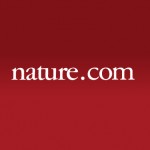 In-plane anisotropic and ultra-low-loss polaritons in a natural van der Waals crystal
In-plane anisotropic and ultra-low-loss polaritons in a natural van der Waals crystalNature Communications 9, 4371 (2018)
 Reconfigurable infrared hyperbolic metasurfaces using phase change materials
Reconfigurable infrared hyperbolic metasurfaces using phase change materialsAdv. Optical Mater. 6, 1800337 (2018)
Spatial and Frequency Selective Plasmonic Metasurface for Long Wavelength Infrared Spectral RegionAnalyst, Advance Article (2018)
Near-field infrared nanospectroscopy and super-resolution fluorescence microscopy enable complementary nanoscale analyses of lymphocyte nucleiNanoletters 19, 6265 (2018)
 Direct Characterization of Near-Field Coupling in Gap Plasmon-Based Metasurfaces
Direct Characterization of Near-Field Coupling in Gap Plasmon-Based MetasurfacesAdv. Opt. Mat., Early View (2018)
Electrically and Thermally Tunable Smooth Silicon Metasurfaces for Broadband Terahertz AntireflectionACS Nano 12, 9405 (2018)
Highly Organized Epitaxy of Dirac Semimetallic PtTe2 Crystals with Extrahigh Conductivity and Visible Surface Plasmons at EdgesNature Nanotechnology 13, 1035 (2018)
 Nano-imaging of intersubband transitions in van der Waals quantum wells
Nano-imaging of intersubband transitions in van der Waals quantum wellsLight: Science & Applications 7, 51 (2018)
Hybrid graphene metasurfaces for high-speed mid-infrared light modulation and single-pixel imagingMaterials 11, 1493 (2018)
Structure-Function Correlative Microscopy of Peritubular and Intertubular DentineAnal. Chem. , Just accepted (2018)
Label-free Infrared Spectroscopy and Imaging of Single Phospholipid Bilayers with Nanoscale ResolutionNanoscale, Accepted Manuscript (2018)
Nano-imaging of an edge-excited plasmon mode in grapheneNanoscale 10,15048 (2018)
Interplay of non-uniform charge distribution on the electrochemical modification of grapheneJournal of Membrane Science 541, 465-473 (2018)
Highly stable aromatic poly (ether sulfone) composite ion exchange membrane for vanadium flow batteryNanotechnology 29, 385205 (2018)
Near-field imaging of graphene triangles patterned by helium ion lithographyNanoscale, Advance Article (2018)
The chemical fingerprint of hair melanosomes by infrared nano-spectroscopyNanoletters, Article ASAP (2018)
 Internal nanostructure diagnosis with hyperbolic phonon polaritons in hexagonal boron nitride
Internal nanostructure diagnosis with hyperbolic phonon polaritons in hexagonal boron nitrideACS Photonics, Just Accepted (2018)
Understanding the image contrast of material boundaries in IR nanoscopy reaching 5 nm spatial resolutionAdvanced Materials, 1802551 (2018)
Tunable Low Loss 1D Surface Plasmons in InAs NanowiresOptics Express 26, 18423 (2018)
Phase-resolved terahertz self-detection nearfield microscopyLight: Science & Applications 7, 27 (2018)
Selective excitation and imaging of ultraslow phonon polaritons in thin hexagonal boron nitride crystalsACS Publications – The Journal of Physical Chemistry C, 10, 1021 (2018)
Combined Tip-Enhanced Raman Spectroscopy and Scattering-Type Scanning Near-Field Optical MicroscopyAdvanced Science 5, 1800175 (2018)
Flexible and Electrically Tunable Plasmons in Graphene– Mica HeterostructuresScience Advances 4, eaat7189 (2018)
Ultra-confined mid-infrared resonant phonon polaritons in van der Waals nanostructuresPLoS ONE 13(6), e0199112. (2018)
Probing structural changes in single enveloped virus particles using nano-infrared spectroscopic imaging2D Mater. 5, 031010 (2018)
Few-layer 1T′ MoTe2 as gapless semimetal with thickness dependent carrier transportOptics Express 26, 18115-18124 (2018)
Compressed sensing FTIR nano-spectroscopy and nano-imagingNanoscale, Accepted Manuscript (2018)
Bi2O3 Monolayers from Elemental Liquid BismuthPlant Physiology, published online (2018)
Infrared nanospectroscopy reveals the chemical nature of pit membranes in water-conducting cells of the plant xylemACS Photonics 5, 2106-2112 (2018)
Near-Field Surface Waves in Few-Layer MoS2ACS Photonics 7, 2773 (2018)
Far Infrared Synchrotron Near-Field Nanoimaging and NanospectroscopyNature Communications 9, 1762 (2018)
 Ultra-confined surface phonon polaritons in molecular layers of van der Waals dielectrics
Ultra-confined surface phonon polaritons in molecular layers of van der Waals dielectricsJ. Phys. Chem. B 122, 5006−5019 (2018)
Inhomogeneity of Cellulose Microfibril Assembly in Plant Cell Walls Revealed with Sum Frequency Generation MicroscopyAdv. Mater, Early View, 1800367 (2018)
Optically Unraveling the Edge Chirality‐Dependent Band Structure and Plasmon Damping in Graphene EdgesOptics Express 26, 11238-11249 (2018)
Low-aberration beamline optics for synchrotron infrared nanospectroscopyAdv. Optical Mater, Early View, 1701368 (2018)
Broadband Multifunctional Plasmonic Logic GatesACS Omega, 3, 4141-4147 (2018)
Infrared Nanospectroscopy of Phospholipid and Surfactin Monolayer DomainsACS Photonics 5, 1912–1918 (2018)
Infrared Fingerprints of Natural 2D Talc and Plasmon–Phonon Coupling in Graphene–Talc HeterostructuresAdv. Mater. 30, 1705318 (2018)
Highly Confined and Tunable Hyperbolic Phonon Polaritons in Van Der Waals Semiconducting Transition Metal OxidesNanoscale 10, 7519-7525 (2018)
Transport mechanisms in a puckered graphene-on-latticeOptica 5, 283-288 (2018)
Nanoscale control over optical singularitiesNanoscale 10, 6288 (2018)
Improving Luttinger-liquid plasmons in carbon nanotubes by chemical dopingAdvanced Healthcare Materials 7, 1700873 (2018)
30 s Response Time of K+ Ion‐Selective Hydrogels Functionalized with 18‐Crown‐6 Ether Based on QCM SensorNature Communications 9, 866 (2018)
 Aggregating sequences that occur in many proteins constitute weak spots of bacterial proteostasis
Aggregating sequences that occur in many proteins constitute weak spots of bacterial proteostasisPhys. Rev. B 97, 085146 (2018)
Highly repeatable nanoscale phase coexistence in vanadium dioxide filmsScience 359, 892–896 (2018)
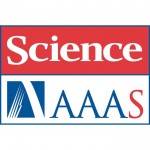 Infrared hyperbolic metasurface based on nanostructured van der Waals materials
Infrared hyperbolic metasurface based on nanostructured van der Waals materialsApplied Physics Express 11, 032001 (2018)
Continuous multispectral imaging of surface phonon polaritons on silicon carbide with an external cavity quantum cascade laserAdv. Funct. Mater. 28, 1706577 (2018)
CdS Nanoribbon‐Based Resistive Switches with Ultrawidely Tunable Power by Surface Charge Transfer DopingVol. 5, No. 2 / February 2018 / Optica 159 (2018)
All-electronic terahertz nanoscopyNanoletters 18, 1373-1378 (2018)
 Quantum Control of Graphene Plasmon Excitation and Propagation at Heaviside Potential Steps
Quantum Control of Graphene Plasmon Excitation and Propagation at Heaviside Potential StepsJournal of Membrane Science 550 198–207 (2017)
High performance mixed matrix membranes (MMMs) composed of ZIF-94 filler and 6FDA-DAM polymerLight: Science & Applications 7, e17172 (2017)
Boron nitride nanoresonators for phonon-enhanced molecular vibrational spectroscopy at the strong coupling limitJ. Phys.: Condens. Matter 30, 025602 (2017)
Temperature dependent infrared nano-imaging of La0.67Sr0.33MnO3 thin filmAdv. Electron. Mater. 2017, 1700377 (2017)
Nanoimaging of Electronic Heterogeneity in Bi2Se3 and Sb2Te3 NanocrystalsCorrosion Science 131, 324-329 (2017)
Air and chlorine gas corrosion of different silicon carbides analyzed by nano-Fourier-transform infrared (nano-FTIR) spectroscopyNature Communications 8, 1471 (2017)
 Probing optical anisotropy of nanometer-thin van der waals microcrystals by near-field imaging
Probing optical anisotropy of nanometer-thin van der waals microcrystals by near-field imagingACS Appl. Mater. Interfaces, Just accepted (2017)
Macroscopic alignment and assembly of π-conjugated oligopeptides using colloidal microchannelsPhys. Status Solidi B, 1700433 (2017)
Nanoscale Characterization of Individual Horizontally Aligned Single-Walled Carbon NanotubesACS Photonics, Article ASAP (2017)
Propagating Plasmons in a Charge-Neutral Quantum Tunneling TransistorNanoletters, Just Accepted (2017)
 Direct amplitude-phase near-field observation of higher-order anapole states
Direct amplitude-phase near-field observation of higher-order anapole statesACS Photonics, Article ASAP (2017)
Nanoscale Laser Terahertz Emission MicroscopyAdv. Mater. 29, 170294 (2017)
Launching Phonon Polaritons by Natural Boron Nitride Wrinkles with Modifiable Dispersion by Dielectric EnvironmentsNanoletters, Article ASAP (2017)
 Plasmon Reflections by Topological Electronic Boundaries in Bilayer Graphene
Plasmon Reflections by Topological Electronic Boundaries in Bilayer GraphenePhys. Status Solidi B, early view article (2017)
High-Resolution Nanoscpectroscopy of Boron Nitride NanotubesACS Nano 11, 8741 (2017)
Mechanical Detection and Imaging of Hyperbolic Phonon Polaritons in Hexagonal Boron NitrideACS Appl. Mater. Interfaces 9, 36137 (2017)
Highly Efficient and Air-Stable Infrared Photodetector Based on 2D Layered Graphene–Black Phosphorus HeterostructureACS Photonics, Article ASAP (2017)
Infrared Nanoimaging Reveals the Surface Metallic Plasmons in Topological InsulatorOptics Express 25, 20421-20430 (2017)
Broadband near-field infrared spectroscopy with a high temperature plasma light sourceNanoletters 17 (10), 5908–5913 (2017)
 Intrinsic Plasmon–Phonon Interactions in Highly Doped Graphene: A Near-Field Imaging Study
Intrinsic Plasmon–Phonon Interactions in Highly Doped Graphene: A Near-Field Imaging Study2D Mater. 4, 035028 (2017)
Oxygen impact on the electronic and vibrational properties of black phosphorus probed by synchrotron infrared nanospectroscopyACS. Appl. Mater. Interfaces 9,28107 (2017)
Porous Two-Dimensional Monolayer Metal−Organic Framework Material and Its Use for the Size-Selective Separation of NanoparticlesOptics Express 25, 16574-16587 (2017)
Enhancing the sensitivity of nano-FTIR spectroscopyAdv. Sci. 4, 1799191 (2017)
Precise Protein Photolithography (P3): High Performance Biopatterning Using Silk Fibroin Light Chain as the ResistAdvanced Materials 29, 1606370 (2017)
The Light-Induced Field-Effect Solar Cell Concept – Perovskite Nanoparticle Coating Introduces Polarization Enhancing Silicon Cell EfficiencyNature Photonics 11, 421-424 (2017)
 Electrical 2π phase control of infrared light in a 350-nm footprint using graphene plasmons
Electrical 2π phase control of infrared light in a 350-nm footprint using graphene plasmonsACS Photonics 4, 1753 (2017)
Phonon-Polaritonic Bowtie Nanoantennas: Controlling Infrared Thermal Radiation at the NanoscaleNature Communications 8, 15561 (2017)
 Imaging metal-like monoclinic phase stabilized by surface coordination effect in vanadium dioxide nanobeamImaging metal-like monoclinic phase stabilized by surface coordination effect in vanadium dioxide nanobeam
Imaging metal-like monoclinic phase stabilized by surface coordination effect in vanadium dioxide nanobeamImaging metal-like monoclinic phase stabilized by surface coordination effect in vanadium dioxide nanobeamNature Communications 8, 15624 (2017)
 Nanoimaging of resonating hyperbolic polaritons in linear boron nitride antennas
Nanoimaging of resonating hyperbolic polaritons in linear boron nitride antennasOptics Express 25, 12295-12302 (2017)
Hybrid plasmonic waveguides formed by metal coating of dielectric ridgesScience Advances 3, e1602617 (2017)
Extraordinary linear dynamic range in laser-defined functionalized graphene photodetectorsScientific Reports 7, 864 (2017)
Active Mediation of Plasmon Enhanced Localized Exciton Generation, Carrier Diffusion and Enhanced Photon EmissionACS Photonics 4, 1207-1215 (2017)
White Light Generation and Anisotropic Damage in Gold Films near Percolation ThresholdLight Sci. Appl. 6, e17057 (2017)
Tailoring of electromagnetic field localizations by two-dimensional graphene nanostructuresNanoletters 17 (4), 2667-2673 (2017)
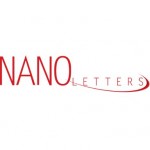 Dual-Scattering Near-Field Microscope for Correlative Nanoimaging of SERS and Electromagnetic Hotspots
Dual-Scattering Near-Field Microscope for Correlative Nanoimaging of SERS and Electromagnetic HotspotsACS Sensors, 2 (3), 386–393 (2017)
Flexible, Transparent, and Free-Standing Silicon Nanowire SERS Platform for in Situ Food InspectionNature Communications 8, 14402 (2017)
 Hyperspectral infrared nanoimaging of organic samples based on Fourier transform infrared nanospectroscopy
Hyperspectral infrared nanoimaging of organic samples based on Fourier transform infrared nanospectroscopyLight: Science & Applications 6, e16204 (2017)
Effects of edge on graphene plasmons as revealed by infrared nanoimagingJournal of Physics D: Applied Physics, 50, 094002 (6) (2017)
High performance photodetector based on 2D CH3NH3PbI3 perovskite nanosheetsACS Nano 11 (2), 1530-1539 (2017)
Direct Electrical Probing of Periodic Modulation of Zinc-Dopant Distributions in Planar Gallium Arsenide NanowiresACS Photonics 4, 567-575 (2017)
Bridged Bowtie Aperture Antenna for Producing an Electromagnetic Hot SpotNature Nanotechnology 12, 207-211 (2016)
 Femtosecond photo-switching of interface polaritons in black phosphorus heterostructures
Femtosecond photo-switching of interface polaritons in black phosphorus heterostructuresNanoletters 17, 228 (2016)
 Optical Nanoimaging of Hyperbolic Surface Polaritons at the Edges of van der Waals Materials
Optical Nanoimaging of Hyperbolic Surface Polaritons at the Edges of van der Waals MaterialsNanoscale, 9, 208 (2016)
Study of graphene plasmons in graphene–MoS2 heterostructures for optoelectronic integrated devicesElsevier: Industrial Crops and Products (2016)
An alternative approach for the incorporation of cellulose nanocrystals in flexible polyurethane foams based on renewably sourced polyolsAdvanced Optical Materials (2016)
Visible Range Plasmonic Modes on Topological Insulator Nanostructures2D Materials, 3 045001 (2016)
Tailorable reflection of surface plasmons in defect engineered grapheneNano-Micro Letters 9: 2 (2016)
Molybdenum Nanoscrews: A Novel Non-coinage-Metal Substrate for Surface-Enhanced Raman ScatteringACS Appl. Mater. Interfaces, 8 (35), pp 23160–23166 (2016)
Nanoscopy of Phase Separation in InxGa1–xN AlloysNanoscale, Advance Article (2016)
Chemically-doped graphene with improved surface plasmon characteristics: an optical near-field studyACS Nano, Just Accepted Manuscript (2016)
Reversible Structural Swell-Shrink and Recoverable Optical Properties in Hybrid Inorganic-Organic PerovskitePhysica Status Solidi B (2016)
Scattering near-field optical microscopy on metallic and semiconducting carbon nanotube bundles in the infraredACS Photonics, Article ASAP (2016)
Nanofocusing of Hyperbolic Phonon Polaritons in a Tapered Boron Nitride SlabNature Materials (2016)
 Reversible optical switching of highly confined phonon–polaritons with an ultrathin phase-change material
Reversible optical switching of highly confined phonon–polaritons with an ultrathin phase-change materialAdvanced Materials Interfaces, 2016 (2016)
Nanoscopy of Black Phosphorus DegradationNanoletters 16(6), 3858-3865 (2016)
 Imaging of Anomalous Internal Reflections of Hyperbolic Phonon-Polaritons in Hexagonal Boron Nitride
Imaging of Anomalous Internal Reflections of Hyperbolic Phonon-Polaritons in Hexagonal Boron NitrideNature Photonics 10, 244–247 (2016)
 Ultrafast optical switching of infrared plasmon polaritons in high-mobility graphene
Ultrafast optical switching of infrared plasmon polaritons in high-mobility grapheneNature Photonics 10, 239–243 (2016)
 Real-space mapping of tailored sheet and edge plasmons in graphene nanoresonators
Real-space mapping of tailored sheet and edge plasmons in graphene nanoresonatorsPhysical Review B 93, 121302 (2016)
Two-dimensional optical nanovortices at visible lightOptics Express Vol. 24, Issue 5, pp. 4582-4590 (2016)
Near-field characterization of bound plasmonic modes in metal strip waveguidesOptics Express Vol. 24, Issue 5, pp. 4431-4441 (2016)
Exploring the detection limits of infrared near-field microscopy regarding small buried structures and pushing them by exploiting superlens-related effectsCorrosion Science 108, pp. 60–65 (2016)
Nano-FTIR microscopy and spectroscopy studies of atmospheric corrosion with a spatial resolution of 20 nmNature Communications 7, Article number: 10783 (2016)
 Near-field photocurrent nanoscopy on bare and encapsulated graphene
Near-field photocurrent nanoscopy on bare and encapsulated grapheneAdvanced Materials 28, Issue 15, pp. 2931–2938 (2016)
Far-Field Spectroscopy and Near-Field Optical Imaging of Coupled Plasmon–Phonon Polaritons in 2D van der Waals HeterostructuresNano Letters, Article ASAP (2016)
 Harnessing a Quantum Design Approach for Making Low-Loss Superlenses
Harnessing a Quantum Design Approach for Making Low-Loss SuperlensesOptics Express, Vol. 24, Issue 2, pp. 1154-1164 (2016)
Nanoscale plasmonic phenomena in CVD-grown MoS2 monolayer revealed by ultra-broadband synchrotron radiation based nano-FTIR spectroscopy and near-field microscopyNano Letters, Article ASAP (2016)
 Ultrafast Mid-Infrared Nanoscopy of Strained Vanadium Dioxide Nanobeams
Ultrafast Mid-Infrared Nanoscopy of Strained Vanadium Dioxide NanobeamsFaraday Discussions, 187, 555-573 (2016)
High spatial resolution (1.1 μm and 20 nm) FTIR polarization contrast imaging reveals pre-rupture disorder in damaged tendonNano Letters, Article ASAP (2015)
 Active Optical Metasurfaces Based on Defect-Engineered Phase-Transition Materials
Active Optical Metasurfaces Based on Defect-Engineered Phase-Transition MaterialsACS Nano, Article ASAP (2015)
Nanoscale Insights into the Hydrogenation Process of Layered α-MoO3Nano Letters, 2016, 16 (1), pp 663–670 (2015)
 Real-Space Mapping of the Chiral Near-Field Distributions in Spiral Antennas and Planar Metasurfaces
Real-Space Mapping of the Chiral Near-Field Distributions in Spiral Antennas and Planar MetasurfacesOptics Express Vol. 23, Issue 25, pp. 32759-32765 (2015)
Spin-patterned plasmonics: towards optical access to topological-insulator surface statesOptica Vol. 2, Issue 12, pp. 1045-1048 (2015)
Nanoscale shaping and focusing of visible light in planar metal–oxide–silicon waveguidesFaraday Discuss (2015)
New IR imaging modalities for cancer detection and for intra-cell chemical mapping with a sub-diffraction mid-IR s-SNOMNano Letters, 2015, 15 (12), pp 8148–8154 (2015)
 Boosting Local Field Enhancement by on-Chip Nanofocusing and Impedance-Matched Plasmonic Antennas
Boosting Local Field Enhancement by on-Chip Nanofocusing and Impedance-Matched Plasmonic AntennasLaser & Photonics, Volume 9, Issue 6, pages 637–649, November 2015 (2015)
Mapping the near fields of plasmonic nanoantennas by scattering-type scanning near-field optical microscopyApplied Physics Letters 107, 151902 (2015)
Imaging of phase change materials below a capping layer using correlative infrared near-field microscopy and electron microscopyNature Photonics 9, 674–678 (2015)
 Direct observation of ultraslow hyperbolic polariton propagation with negative phase velocity
Direct observation of ultraslow hyperbolic polariton propagation with negative phase velocityScientific Reports 5, Article number: 13997 (2015)
Control of plasmonic nanoantennas by reversible metal-insulator transitionNanoscale, 2015, 7, 15392-15403 (2015)
A centimeter-scale sub-10 nm gap plasmonic nanorod array film as a versatile platform for enhancing light–matter interactionsACS Nano, 2015, 9 (8), pp 7968–7975 (2015)
Graphene-Based Platform for Infrared Near-Field Nano-Spectroscopy of Water and Biological Materials in an Aqueous EnvironmentNano Letters, 15 (8), pp 4859–4864 (2015)
 Tuning and Persistent Switching of Graphene Plasmons on a Ferroelectric Substrate
Tuning and Persistent Switching of Graphene Plasmons on a Ferroelectric SubstratePhysical Review B 91, 245155 (2015)
Phase transition in bulk single crystals and thin films of VO2 by nanoscale infrared spectroscopy and imagingNature Communications 6, No. 7507 (2015)
 Hyperbolic phonon-polaritons in boron nitride for near-field optical imaging and focusing
Hyperbolic phonon-polaritons in boron nitride for near-field optical imaging and focusingNature Nanotechnology 10, 682–686 (2015)
 Graphene on hexagonal boron nitride as a tunable hyperbolic metamaterial
Graphene on hexagonal boron nitride as a tunable hyperbolic metamaterialNanoscale, 2015,7, 11620-11625 (2015)
Graphene/h-BN plasmon–phonon coupling and plasmon delocalization observed by infrared nano-spectroscopyOptics Express Vol. 23, Issue 10, pp. 13358-13369 (2015)
Magnitude and phase-resolved infrared vibrational nanospectroscopy with a swept quantum cascade laserScientific Reports 5, No. 9837 (2015)
The reduction of surface plasmon losses in quasi-suspended grapheneAdvanced Optical Materials 3, 1389–1396 (2015)
Hybrid Graphene–Perovskite Phototransistors with Ultrahigh Responsivity and GainNature Communications 6, No 6963 (2015)
 Subdiffractional focusing and guiding of polaritonic rays in a natural hyperbolic material
Subdiffractional focusing and guiding of polaritonic rays in a natural hyperbolic materialNano Letters, 2015, 15 (5), pp 2787–2793 (2015)
 Solvothermally Synthesized Sb2Te3 Platelets Show Unexpected Optical Contrasts in Mid-Infrared Near-Field Scanning Microscopy
Solvothermally Synthesized Sb2Te3 Platelets Show Unexpected Optical Contrasts in Mid-Infrared Near-Field Scanning MicroscopyOptics Express, Vol. 23, Issue 7, pp. 9100-9108 (2015)
Efficient interfacing photonic and long-range dielectric-loaded plasmonic waveguidesFuel, Volume 153, pp. 628–633 (2015)
Relation of chemical composition to asphalt microstructure – Details and properties of micro-structures in bitumen as seen by thermal and friction force microscopy and by scanning near-filed optical microscopyThe Journal of Physical Chemistry Letters , 2015, 6, pp 1126–1129 (2015)
IR Near-Field Study of the Solid Electrolyte Interphase on a Tin ElectrodeApplied Physics Letters (2015)
Monolayers of WxMo12xS2 alloy heterostructure with in-plane composition variationsApplied Physics Letters 106, 023113 (2015)
Nanoscale-resolved chemical identification of thin organic films using infrared near-field spectroscopy and standard Fourier transform infrared referencesNature Materials 14, 421–425 (2014)
 Highly confined low-loss plasmons in graphene–boron nitride heterostructures
Highly confined low-loss plasmons in graphene–boron nitride heterostructuresNature Communications 5, No 5445 (2014)
 Nanoscale infrared spectroscopy as a non-destructive probe of extraterrestrial samples
Nanoscale infrared spectroscopy as a non-destructive probe of extraterrestrial samplesComposites: Part B 71 (2015) 210–217 (2014)
Impedance spectroscopy characterization of relaxation mechanisms in gold–chitosan nanocompositesMicroscopy Today, Volume22, Issue 06 Nov 2014, pp 24 – 29 (2014)
Tiny Crystals Located and Identified by Infrared NanoscopyNano Letters, 2015, 15 (1), pp 1–7 (2014)
 IR Near-Field Spectroscopy and Imaging of Single LixFePO4 Microcrystals
IR Near-Field Spectroscopy and Imaging of Single LixFePO4 MicrocrystalsNano Letters, 14, p. 5598–5602 (2014)
 Sub-100 nm Focusing of Short Wavelength Plasmons in Homogeneous 2D Space
Sub-100 nm Focusing of Short Wavelength Plasmons in Homogeneous 2D SpaceNature Photonics 8, 841–845 (2014)
 Ultrafast multi-terahertz nano-spectroscopy with sub-cycle temporal resolution
Ultrafast multi-terahertz nano-spectroscopy with sub-cycle temporal resolutionACS Photonics, 1, p. 794 (2014)
Near-Field Mapping of Optical Modes on All-Dielectric Silicon NanodisksOptics Express 22, p. 22369-22381 (2014)
Near-field imaging and spectroscopy of locally strained GaN using an IR broadband laserNano Letters, 14, p. 4529-4534 (2014)
 Ultrafast Dynamics of Surface Plasmons in InAs by Time-Resolved Infrared Nanospectroscopy
Ultrafast Dynamics of Surface Plasmons in InAs by Time-Resolved Infrared NanospectroscopyIEEE Photon. J., p. 480147 – Plasmonics (2014)
Checkerboard Nanoplasmonic Gold Structure for Long-Wave Infrared Absorption EnhancementOptics Express, 22, p. 17948 (2014)
Characterization of semiconductor materials using synchrotron radiation-based near-field infrared microscopy and nano-FTIR spectroscopyNano Lett., 2014, 14 (7), pp 3925–3929 (2014)
 Direct Characterization of Plasmonic Slot Waveguides and Nanocouplers
Direct Characterization of Plasmonic Slot Waveguides and NanocouplersNature Communications, 5, p.4101 (2014)
 Sub-micron phase coexistence in small-molecule organic thin films revealed by infrared nano-imaging
Sub-micron phase coexistence in small-molecule organic thin films revealed by infrared nano-imagingThe European Physical Journal B, 87, p.126 (2014)
Bundle versus network conductivity of carbon nanotubes separated by typeACS Photonics, 1, p. 604-611 (2014)
Polarization-Resolved Near-Field Characterization of Nanoscale Infrared Modes in Transmission Lines Fabricated by Gallium and Helium Ion Beam MillingACS Nano 8, 6911-6921 (2014)
Recovery of Permittivity and Depth from Near-Field Data as a Step toward Infrared NanotomographyScience 344, p.1369 (2014)
 Controlling graphene plasmons with resonant metal antennas and spatial conductivity patterns
Controlling graphene plasmons with resonant metal antennas and spatial conductivity patternsJ Phys Chem C, 118, p.9119 (2014)
Direct Near-Field Observation of Orientation-Dependent Optical Response of Gold NanorodsOptics Express 22-10341 (2014) (2014)
Nanofocusing in circular sector-like nanoantennasScience 343, 1125 (2014) (2014)
 Tunable Phonon Polaritons in Atomically Thin van der Waals Crystals of Boron Nitride
Tunable Phonon Polaritons in Atomically Thin van der Waals Crystals of Boron NitrideNano Letters 2014 14 (2) pp 894–900 (2014)
 Ultrafast and Nanoscale Plasmonic Phenomena in Exfoliated Graphene Revealed by Infrared Pump−Probe Nanoscopy
Ultrafast and Nanoscale Plasmonic Phenomena in Exfoliated Graphene Revealed by Infrared Pump−Probe NanoscopyNature Communications 4, 2890 (2013)
 Structural analysis and mapping of individual protein complexes by infrared nanospectroscopy
Structural analysis and mapping of individual protein complexes by infrared nanospectroscopyNanoletters, 13, p.6210 (2013)
 Strong Plasmon Reflection at Nanometer-Size Gaps in Monolayer Graphene on SiC
Strong Plasmon Reflection at Nanometer-Size Gaps in Monolayer Graphene on SiCPhysical Review Letters, 111, p.096602 (2013)
Anisotropic Electronic State via Spontaneous Phase Separation in Strained Vanadium Dioxide FilmsNature Nanotechnology 8, 821–825 (2013)
 Electronic and plasmonic phenomena at graphene grain boundaries
Electronic and plasmonic phenomena at graphene grain boundariesOptics Express, Vol. 21, Issue 18, pp. 21607-21617 (2013)
Probe-sample optical interaction: size and wavelength dependence in localized plasmon near-field imagingPhys. Rev. Lett. 111, 096602 (2013) (2013)
Anisotropic Electronic State via Spontaneous Phase Separation in Strained Vanadium Dioxide FilmsPhysical Review Letters, 110, p.203902 (2013)
Experimental Verification of the Spectral Shift between Near- and Far-Field Peak Intensities of Plasmonic Infrared NanoantennasUltramicroscopy, 126, p.40 (2013)
Visibility of weak contrasts in subsurface scattering near-field microscopyJournal of Physical Chemistry Letters, 4, p.1526 (2013)
Quantitative Measurement of Local Infrared Absorption and Dielectric Function with Tip-Enhanced Near-Field MicroscopyOptics Express, 21, p.2913 (2013)
Near-field imaging and nano-Fourier-transform infrared spectroscopy using broadband synchrotron radiationOptics Express, 21, p.1270 (2013)
Visualizing the near-field coupling and interference of bonding and anti-bonding modes in infrared dimer nanoantennasNano Letters, 2013, 13 (3), pp 1065–1072 (2013)
 Resonant Antenna Probes for Tip-Enhanced Infrared Near-Field Microscopy
Resonant Antenna Probes for Tip-Enhanced Infrared Near-Field MicroscopyJ. Biophotonics 1–7 (2012)
Visualisation of methacrylate-embedded human bone sections by infrared nanoscopyNature Communications 3, p.1131 (2012)
 Correlative infrared–electron nanoscopy reveals the local structure–conductivity relationship in zinc oxide nanowires.
Correlative infrared–electron nanoscopy reveals the local structure–conductivity relationship in zinc oxide nanowires.Physical Review B, 85, p.075419 (2012)
Near-field spectroscopy of silicon dioxide thin filmsJournal of Nanoparticle Research, 14, p.766 (2012)
Nanoscale near-field infrared spectroscopic imaging of silica-shell/gold-core and pure silica nanoparticlesColloids and Surfaces A: Physicochemical and Engineering Aspects, 402, p.146 (2012)
Characterization of localized surface plasmon resonance transducers produced from Au25 nanoparticle multilayersApplied Physics Letters 101, 193105 (2012)
Antenna-enhanced infrared near-field nanospectroscopy of a polymerApplied Physics Letters 101, 131102 (2012)
Real-space mapping of nanoplasmonic hotspots via optical antenna-gap loadingPhysical Review Letters 97, p.60801 (2012)
Nanoscale Layering of Antiferromagnetic and Superconducting Phases in Rb2Fe4Se5 Single Crystals.Nanoletters 12, p. 3973 (2012)
 nano-FTIR absorption spectroscopy of molecular fingerprints at 20 nm spatial resolution.
nano-FTIR absorption spectroscopy of molecular fingerprints at 20 nm spatial resolution.Optics Express 20, p. 13173 (2012)
Quasi-analytical model for scattering infrared near-field microscopy on layered systems.Beilstein Journal of Nanotechnology 3, p.312 (2012)
nano-FTIR chemical mapping of minerals in biological materialsNature Communications 3, p.684 (2012)
 Resolving the electromagnetic mechanism of surface-enhanced light scattering at single hot spots
Resolving the electromagnetic mechanism of surface-enhanced light scattering at single hot spotsACS nano 6, p.8 (2012)
Phase in NanoopticsOptics Express 20, p.593 (2011)
Enhanced resolution in subsurface near-field optical microscopyOptics Express 19, p.20865 (2011)
Nanoscale subsurface- and material-specific identification of single nanoparticlesOptics Express 19, p.15047 (2011)
Longitudinal and transverse coupling in infrared gold nanoantenna arrays: long range versus short range interaction regimesACS nano 5, p.6494 (2011)
Nanoscale Infrared Absorption Spectroscopy of Individual Nanoparticles Enabled by Scattering-Type Near-Field MicroscopyNature Photonics 5, p. 283 (2011)
 Nanofocusing of mid-infrared energy with tapered transmission lines
Nanofocusing of mid-infrared energy with tapered transmission linesPhysical Review B 83, p.45404 (2011)
Broadband-infrared assessment of phonon resonance in scattering-type near-field microscopyNano letters 10, 3524 (2010)
 Phase-Resolved Mapping of the Near-Field Vector and Polarization State in Nanoscale Antenna Gaps
Phase-Resolved Mapping of the Near-Field Vector and Polarization State in Nanoscale Antenna GapsJournal of Physical Chemistry C 114, p.7341 (2010)
Amplitude- and Phase-Resolved Near-Field Mapping of Infrared Antenna Modes by Transmission-Mode Scattering-Type Near-Field MicroscopyNano letters 10, p.1387 (2010)
 Nanoscale Free Carrier Profiling on Individual Semiconductor Nanowires by Infrared Near-Field Nanoscopy
Nanoscale Free Carrier Profiling on Individual Semiconductor Nanowires by Infrared Near-Field NanoscopyNanotechology 21, p.235702 (2010)
Infrared spectroscopic near-field mapping of single nanotransistorsPhysical Review B 80, 115115 (2009)
Inhomogeneous electronic state near the insulator-to-metal transition in the correlated oxide VO2Journal of Infrared, Millimeter and Terahertz Waves 30, 1255 (2009)
Nanoscale conductivity contrast by scattering-type near-field optical microscopy in the visible, infrared and THz domainsA.Zayats and D. Richards, Editors, Artech House, ISBN 978-1-59693-284-5 (2009)
Near-field nanoscopy by elastic light scattering from a tip in Nano-Optics and Near-Field Optical MicroscopyNature Photonics 3, p.287 (2009)
 Controlling the near-field oscillations of loaded plasmonic nanoantennas
Controlling the near-field oscillations of loaded plasmonic nanoantennasOptics Express 17, p.22351 (2009)
Nanoscale residual stress-field mapping around nanoindents in SiC by IR s-SNOM and confocal Raman microscopyPhysical Review B 79, p. 125439 (2009)
Influence of the tip in near-field imaging of nanoparticle plasmon modes: Weak and strong coupling regimesOptics Express 16, 1529 (2008)
Substrate-enhanced infrared near-field spectroscopyApplied Physical Letters 92, p.203104 (2008)
Focusing of surface phonon polaritonsNano Letters 8, p.3766 (2008)
 Terahertz Near-Field Nanoscopy of Mobile Carriers in Single Semiconductor Nanodevices
Terahertz Near-Field Nanoscopy of Mobile Carriers in Single Semiconductor NanodevicesOptics Express 15, 8550 (2007)
Analytical model for quantitative prediction of material contrasts in scattering-type near-field optical microscopyJournal of Microscopy 229, p.389 (2007)
Local excitation and interference of surface phonon polaritons studied by near-field infrared microscopyNano Letters 7, p.3177 (2007)
 Material-Specific Infrared Recognition of Single Sub-10 nm Particles by Substrate-Enhanced Scattering-Type Near-Field Microscopy
Material-Specific Infrared Recognition of Single Sub-10 nm Particles by Substrate-Enhanced Scattering-Type Near-Field MicroscopyAdvanced Materials 19, p.2209 (2007)
Simultaneous IR Material Recognition and Conductivity Mapping by Nanoscale Near-Field MicroscopyApplied Physical Letters 89, 101124 (2006)
Pseudoheterodyne detection for background-free near-field spectroscopyPhysical Review Letters 97, p.60801 (2006)
Infrared Imaging of Single Nanoparticles via Strong Field Enhancement in a Scanning NanogapNano letters 6, p.774 (2006)
 Nanoscale Resolved Infrared Probing of Crystal Structure and of Plasmon−Phonon Coupling
Nanoscale Resolved Infrared Probing of Crystal Structure and of Plasmon−Phonon CouplingNano letters 6, p.1307 (2006)
 Infrared Spectroscopic Mapping of Single Nanoparticles and Viruses at Nanoscale Resolution
Infrared Spectroscopic Mapping of Single Nanoparticles and Viruses at Nanoscale ResolutionPhysical Review B 71, 075410 (2005)
Resonant light scattering by near-field induced phonon polaritonsOptics Express 13, 8893 (2005)
Nanoscale resolved subsurface imaging by scattering-type near-field optical microscopyApplied Physical Letters 87, p.81103 (2005)
Near-field imaging of mid-infrared surface phonon polariton propagationPhilosophical Transactions A, 362, 787 (2004)
Near-field optical microscopy by elastic light scattering from a tipNano letters 4, 1669 (2004)
 Nanomechanical Resonance Tuning and Phase Effects in Optical Near-Field Interaction
Nanomechanical Resonance Tuning and Phase Effects in Optical Near-Field InteractionNature Materials 3, p.606 (2004)
 Subwavelength-scale tailoring of surface phonon polaritons by focused ion-beam implantation
Subwavelength-scale tailoring of surface phonon polaritons by focused ion-beam implantationApplied Physical Letters 85, 4466 (2004)
Contrast and scattering efficiency of scattering-type near-field optical probesApplied Physical Letters 85, p.5064 (2004)
Nanoscale polymer recognition by spectral signature in scattering infrared near-field microscopyJournal of Microsccopy 210, 311 (2003)
Performance of visible and mid-infrared scattering-type near-field optical microscopesApplied Physical Letters 83, p. 368 (2003)
Coherent imaging of nanoscale plasmon patterns with a carbon nanotube optical probeApplied Physical Letters 80, 25 (2002)
Material-specific mapping of metal/semiconductor/dielectric nanosystems at 10 nm resolution by backscattering near-field optical microscopyJournal of Microscopy 202, 77 (2001)
Pure optical contrast in scattering-type scanning near-field microscopyApplied Physics B 73, 239 (2001)
Optical oscillation modes of plasmon particles observed in direct space by phase-contrast near-field microscopyPhysical Review Letters 80, 3029 (2000)
Complex optical constants on a subwavelength scale
Company News
neaspec introduces neaSCOPE product line
neaSCOPE is an application-driven product line for tip-enhanced nanoscale imaging and spectroscopy, serving customer needs in diverse fields of science,...
neaspec invites you to its 2nd international workshop on Nanoscale Analytics
neaspec invites you to join this exclusive four day event FREE OF CHARGE (including lunch, coffee breaks, workshop dinner and...
neaspec now represents the business sector ‘Nanoscale Analytics’ at attocube systems
We’re expanding the nanoworld! As of November 4th, neaspec represents the business sector ‘Nanoscale Analytics‘ within attocube systems. Together with...
neaspec invites you to its 1st international workshop on Nanoscale Analytics
The workshop takes you through… scientific talks on various applications held by near-field microscopy experts tutorials on basic principles &...
neaspec achieves 35th place in the Technology Fast 50 – Germany’s fastest growing technology companies
neaspec today received the Deloitte Technology Fast 50 Award. The rankings are based on the percentage sales growth of the...
Researchers discover directional and long-lived nanolight in a 2D-Material
An international team led by researchers from Monash University (Melbourne, Australia), University of Oviedo (Asturias, Spain), CIC nanoGUNE (San Sebastián, Spain), and Soochow University (Suzhou,...
neaspec is selected as a top 3 finalist of the “Prism Award 2018” for the cryo-neaSNOM microsocope
neaspec is selected as a top 3 finalist of the “Prism Award 2018” for the cryo-neaSNOM microsocope. The Photonics Prism...
First infrared nano-spectroscopy demo at the Canadian synchrotron (CLS)
With the support of the Canadian Light Source (CLS), a live demonstration of the neaSNOM nano-FTIR microscope in August 2016 provided researchers...
neaspec wins the iF product design award 2016 for nano-FTIR
neaspec’s neaSNOM microscope wins the prestigious iF design award 2016 in the category products. Each year the iF International Forum Design GmbH awards...
Terahertz near-field microscopy at 30nm spatial resolution
Due to their long wavelengths, terahertz radiation runs into difficulties when detecting extremely small structures. However, by combining terahertz radiation...
Prof. Rainer Hillenbrand (neaspec Scientific Advisor & Co-Founder) wins the Ludwig-Genzel-Prize 2014
Prof. Rainer Hillenbrand (neaspec Scientific Advisor & Co-Founder) wins the Ludwig-Genzel-Prize 2014 for the design and development of infrared near-field...
attocube systems AG acquires the majority holding in neaspec GmbH
Munich-based nanotechnology specialist attocube took over the majority share in neaspec GmbH by mid-February. neaspec and attocube share a common...
neaspec wins STEP award competition 2013 for best product & technology
neaspec won the STEP award competition 2013 for the best product & technology. The laudators emphasized that the prize was...
Redesigned neaspec website is now online
The neaspec website was redesigned from scratch and is now live. The new website provides several advantages: Easier navigation More...
neaspec wins Microscopy Today Innovation Award 2013 for nano-FTIR
nano-FTIR from neaspec wins the prestigous Microscopy Today Innovation Award 2013. The prize is awarded yearly for the top international innovations...
neaspec selected as top 10 finalist of Deutscher Gründerpreis 2013
neaspec is selected as a top 10 finalist of the “Deutscher Gründerpreis 2013″, Germany’s most prestigious Start-Up award initiated by...
nano-FTIR – A new era modern analytical chemistry
Nanoscale chemical identification and mapping of materials now becomes possible with nano-FTIR from neaspec GmbH. This technique combines the best...
neaspec wins CeNS Publication Award 2012
This year, neaspec wins two(!) CeNS publication awards from the Center of NanoScience in Munich: One for a Nano Letters...
neaspec selected as a top 20 finalist of the STEP award competition 2012
neaspec is selected as a top 20 finalist of the STEP award competition 2012. The STEP Award is a german enterprise...
Plasmons on Graphene with neaSNOM
Two independent research teams have successfully used their infrared near-field microscopes (neaSNOM) for laying down a ghost: visualizing Dirac plasmons...
neaspec wins CeNS Publication Award 2011
neaspec wins the CeNS Puplication Award 2011 for their publication “Infrared-spectroscopic nanoimaging with a thermal source” in Nature Materials
neaspec is selected as a top 20 finalist of the STEP award competition 2011
neaspec is selected as a top 20 finalist of the STEP award competition 2011. The STEP Award is a german...



